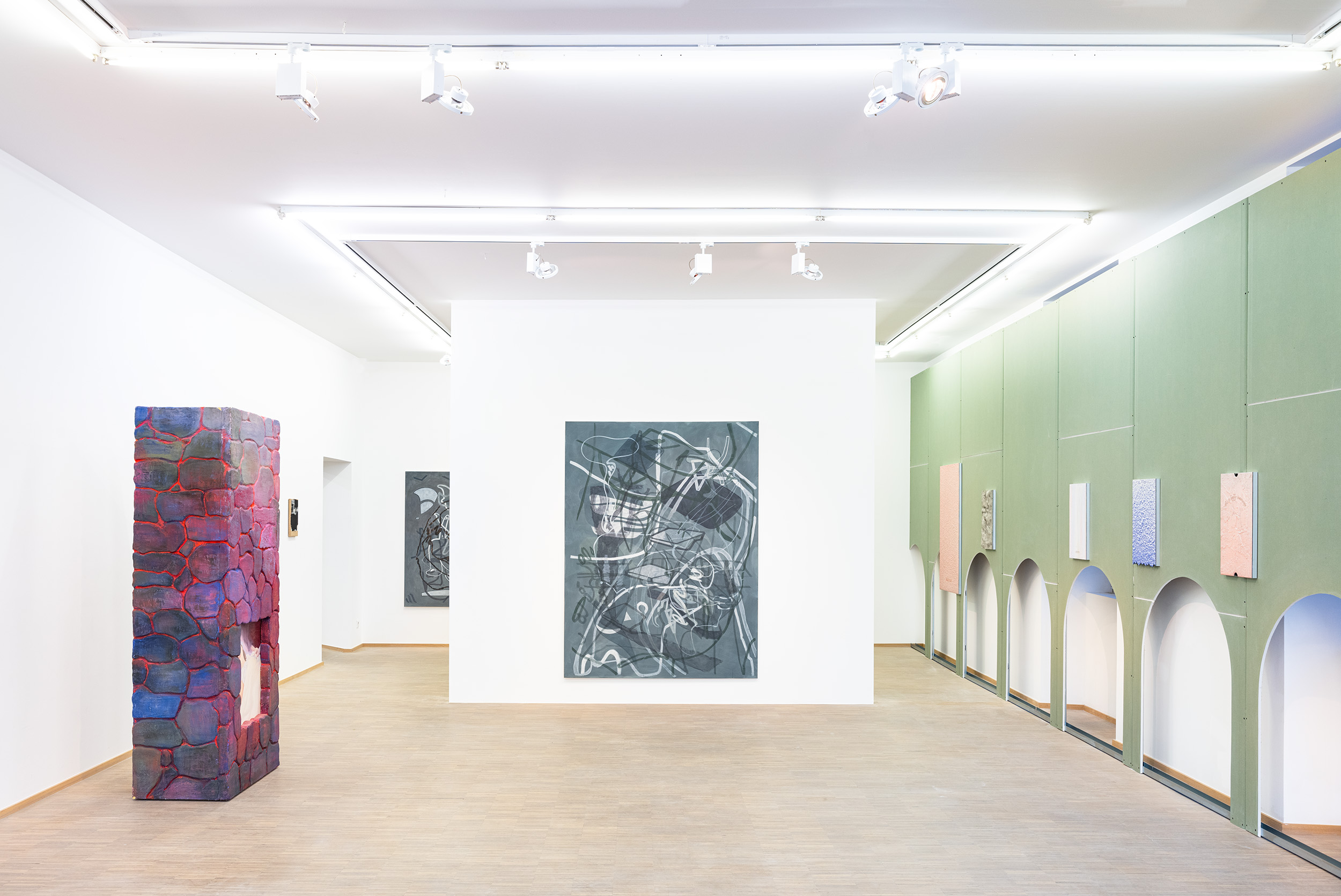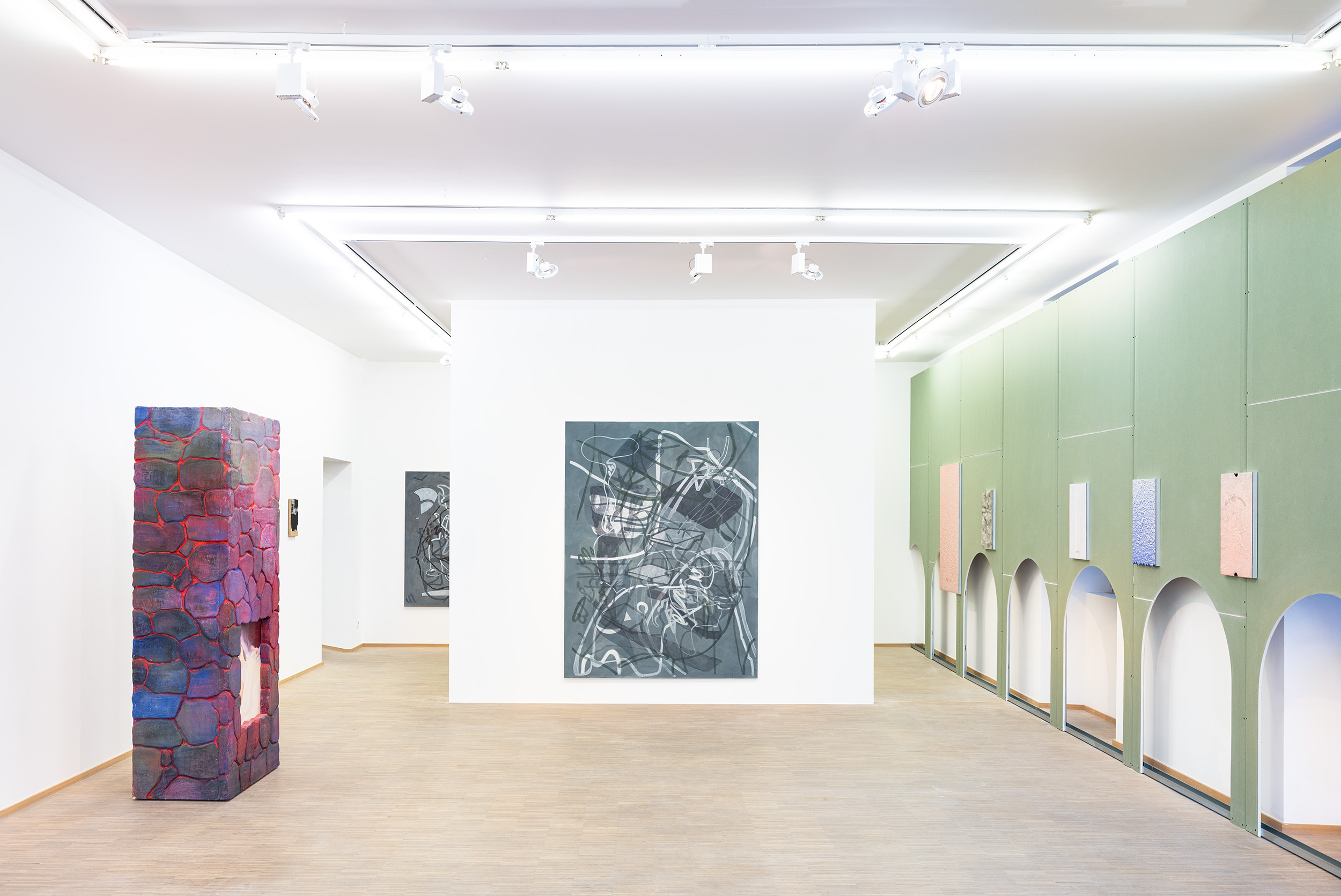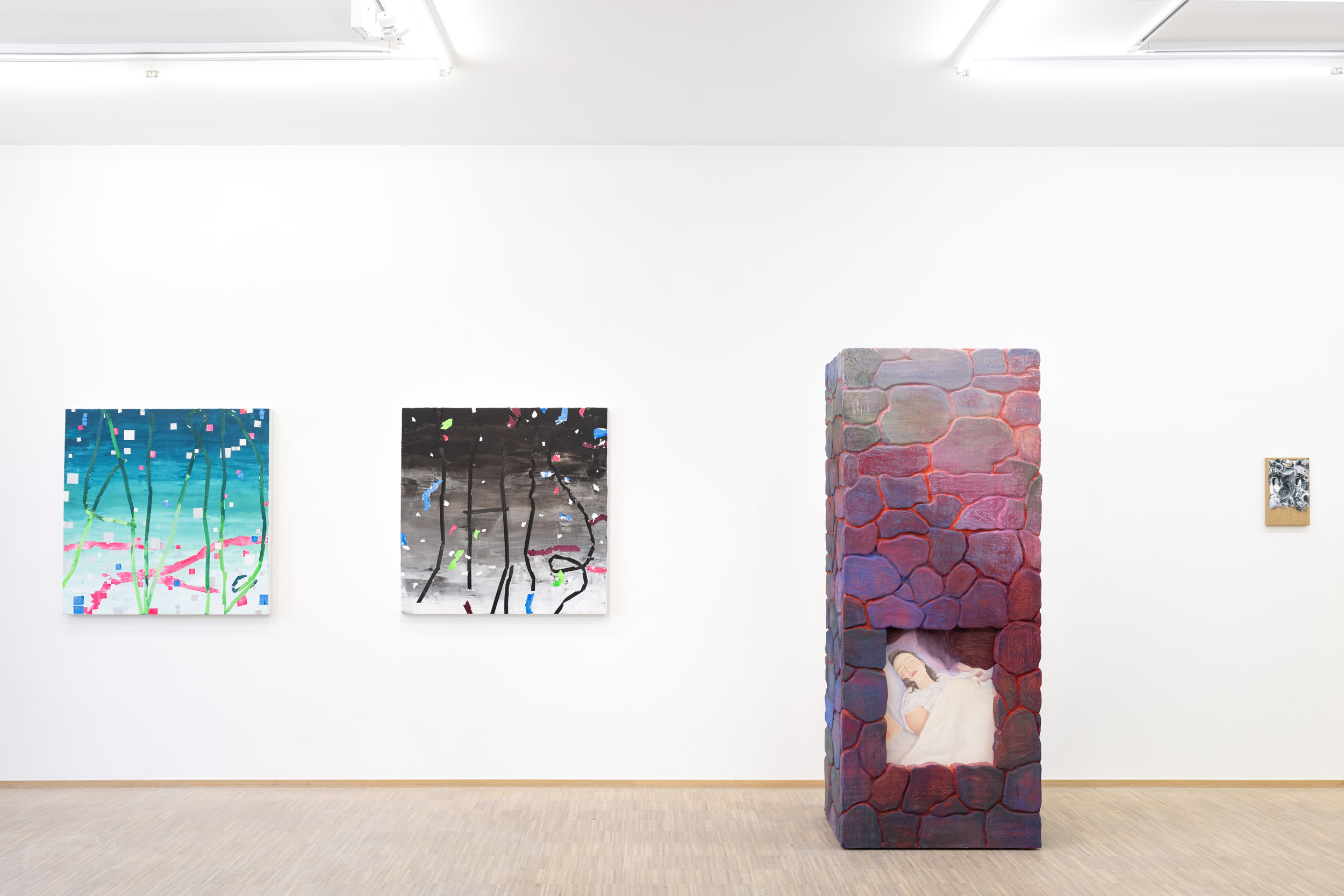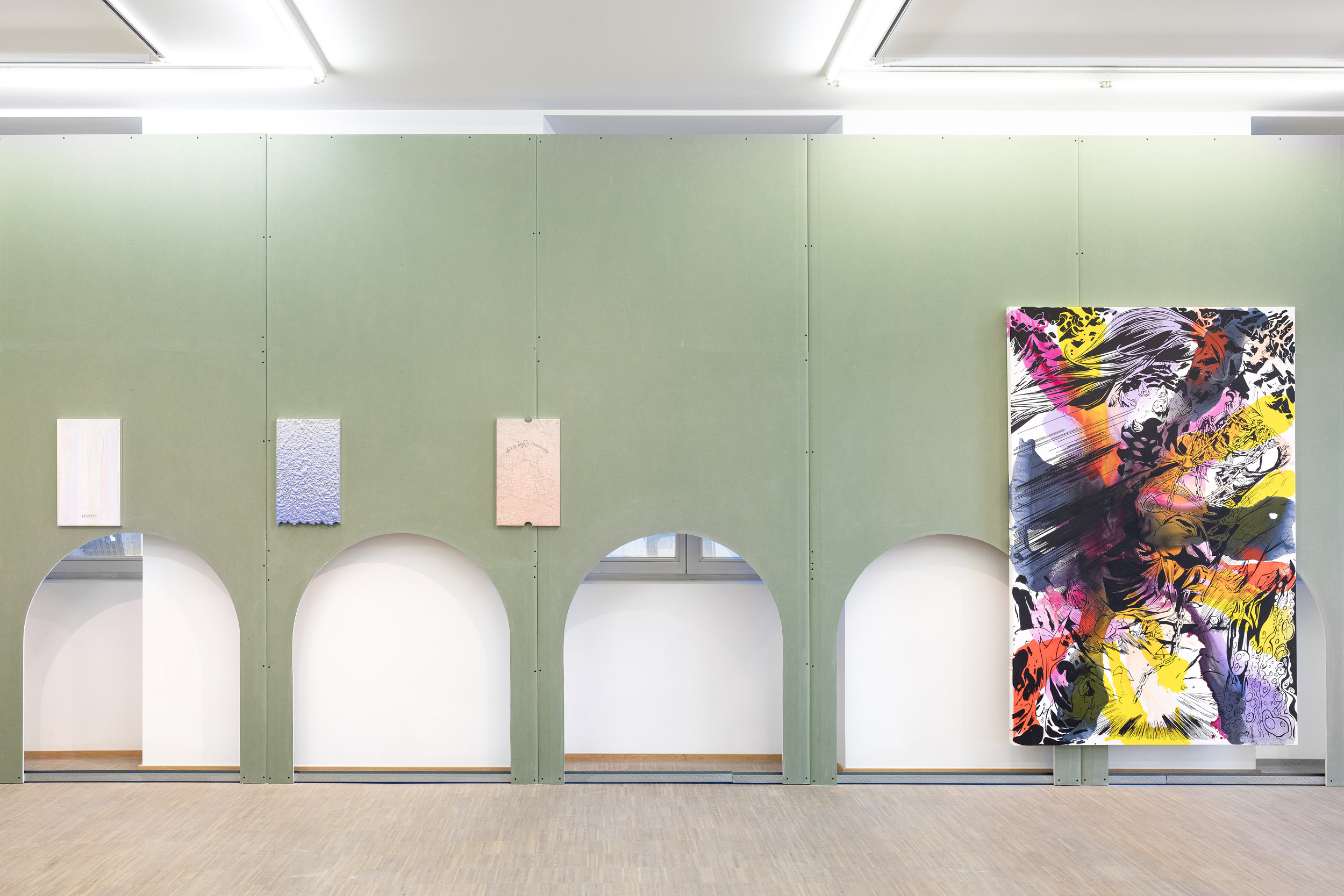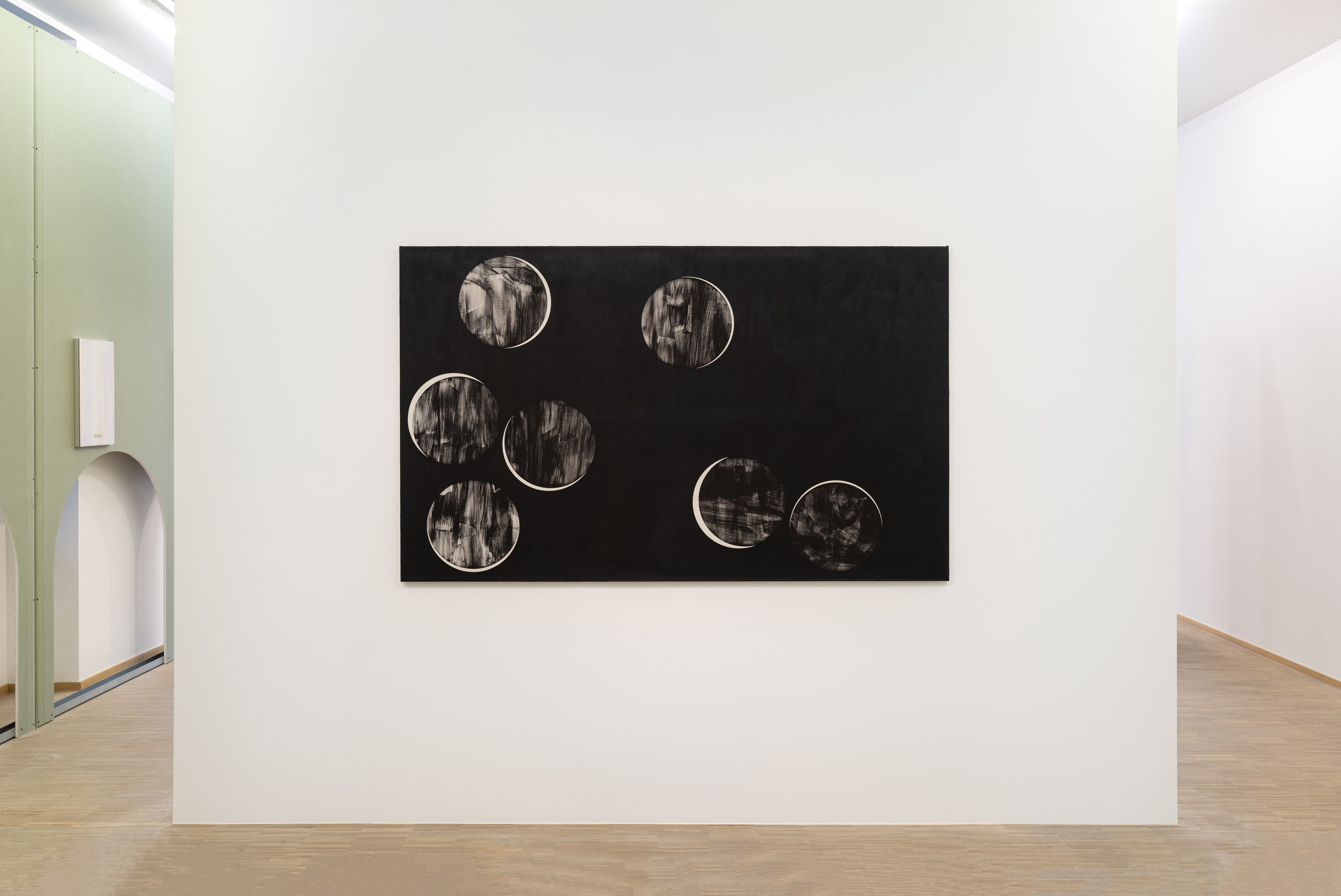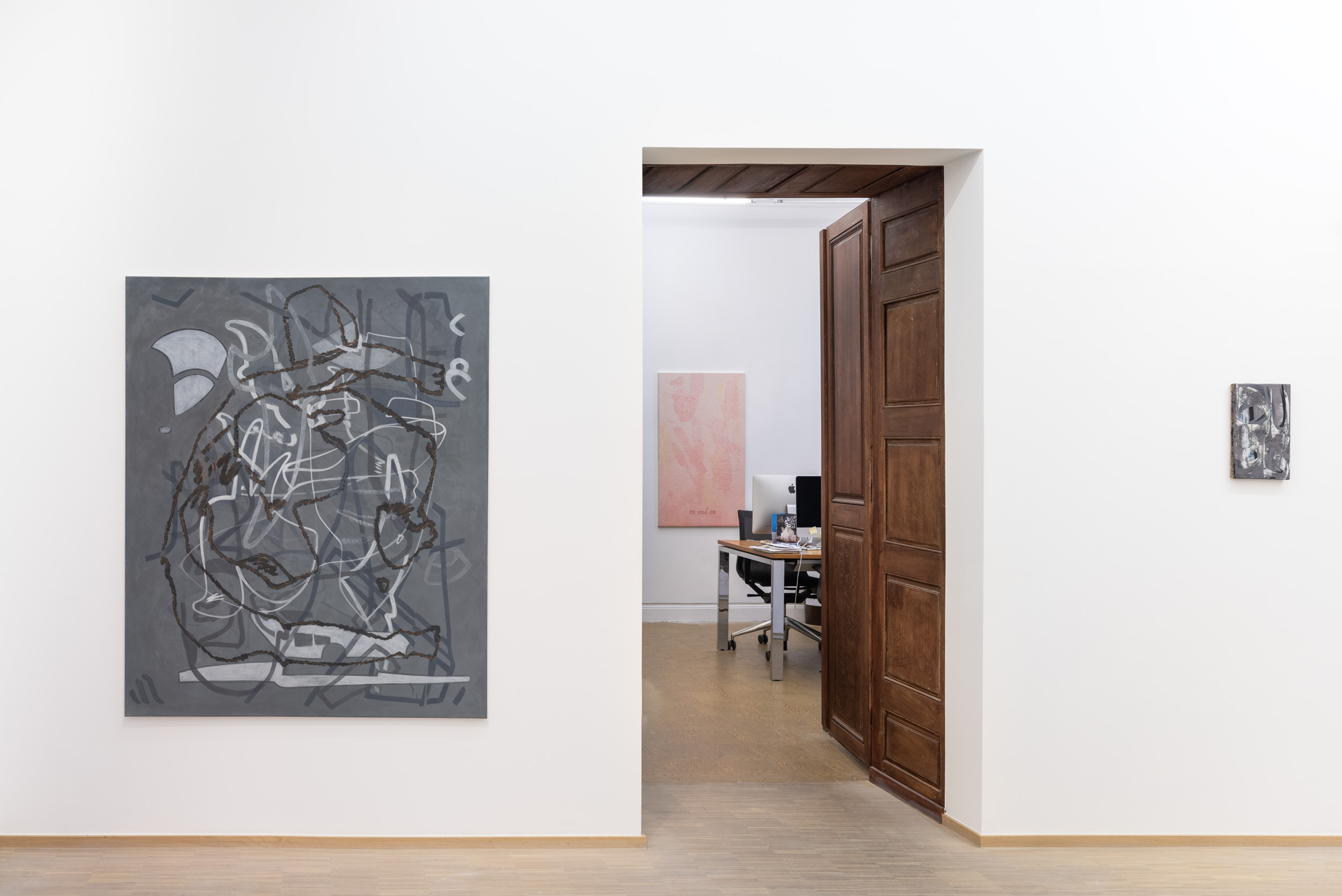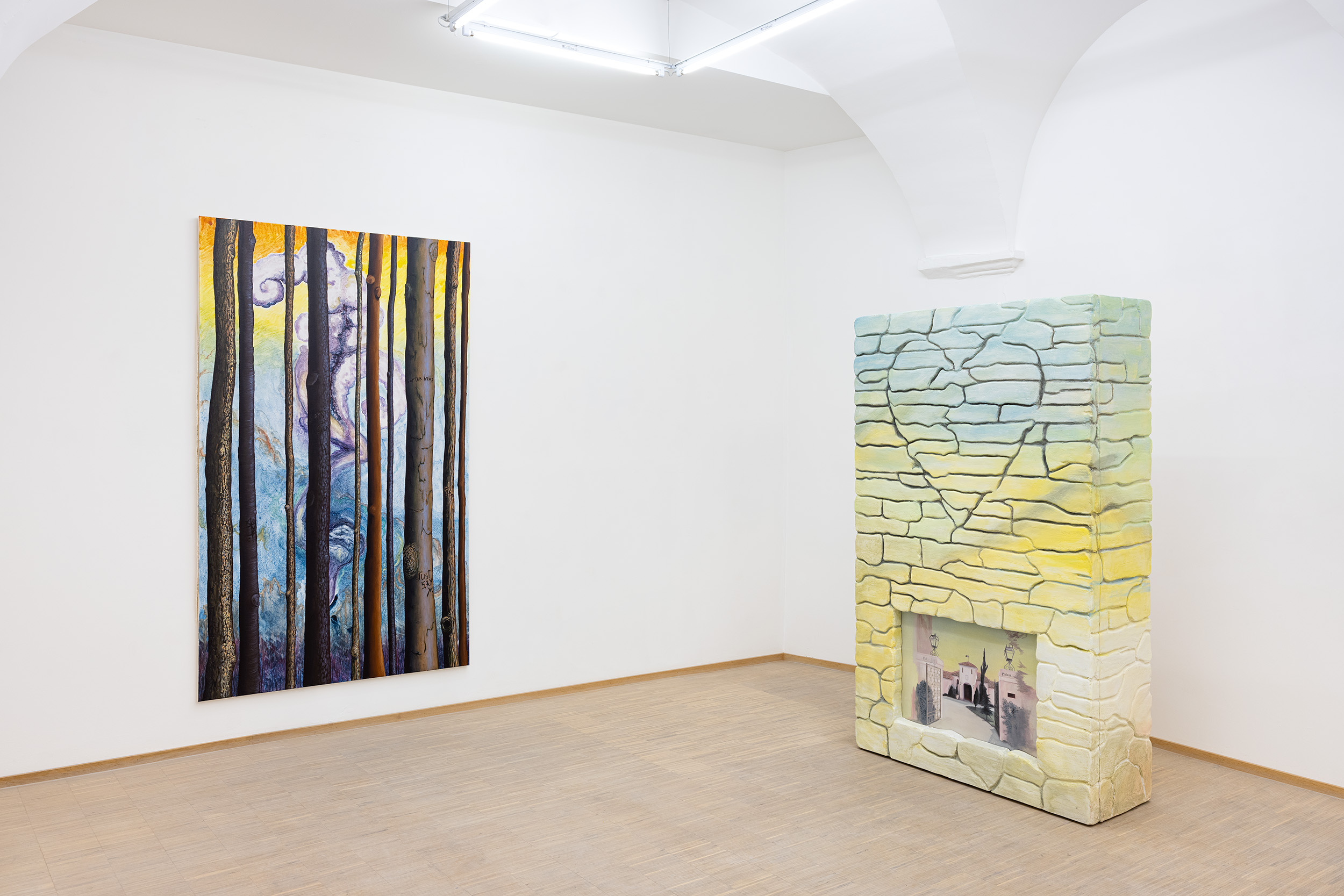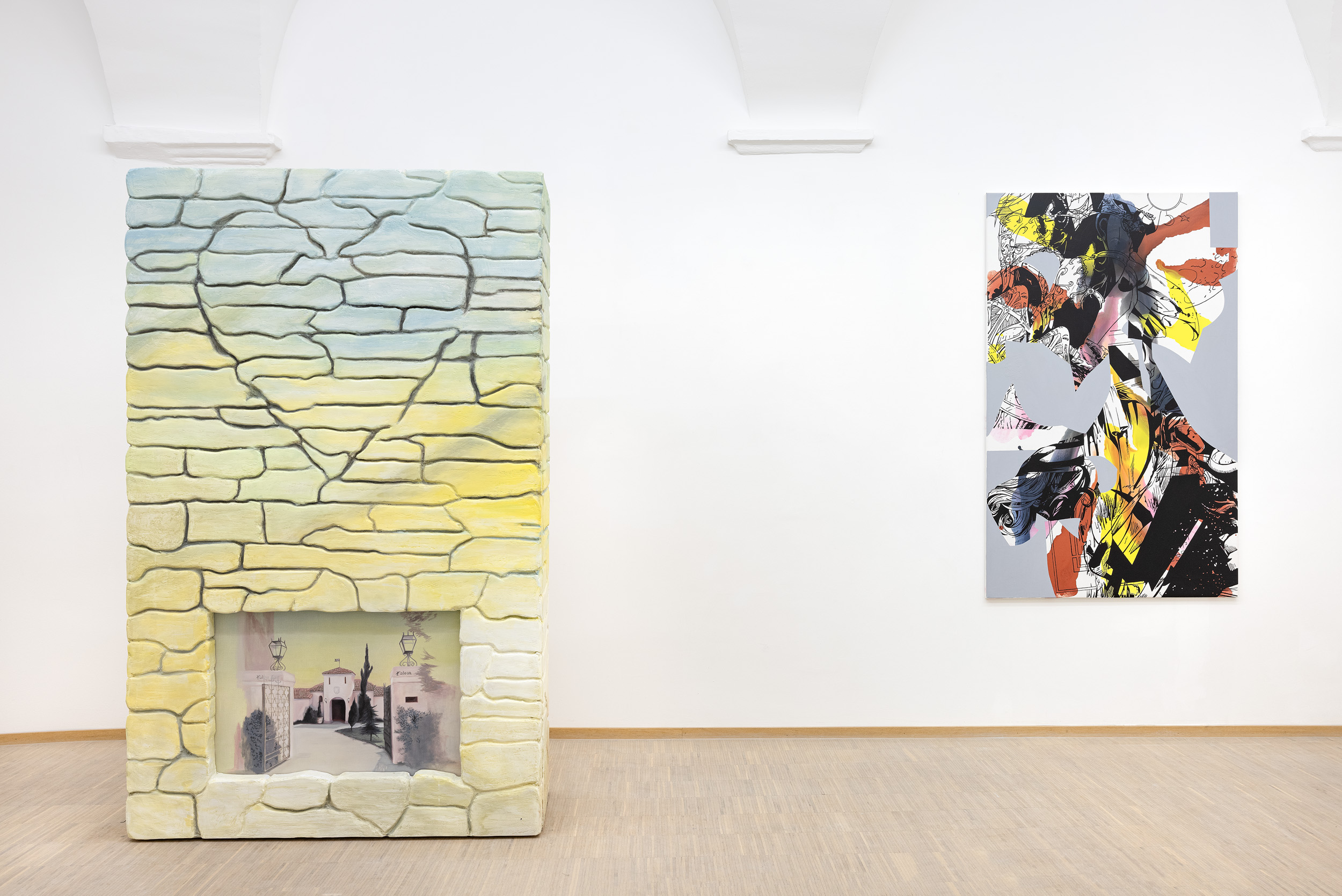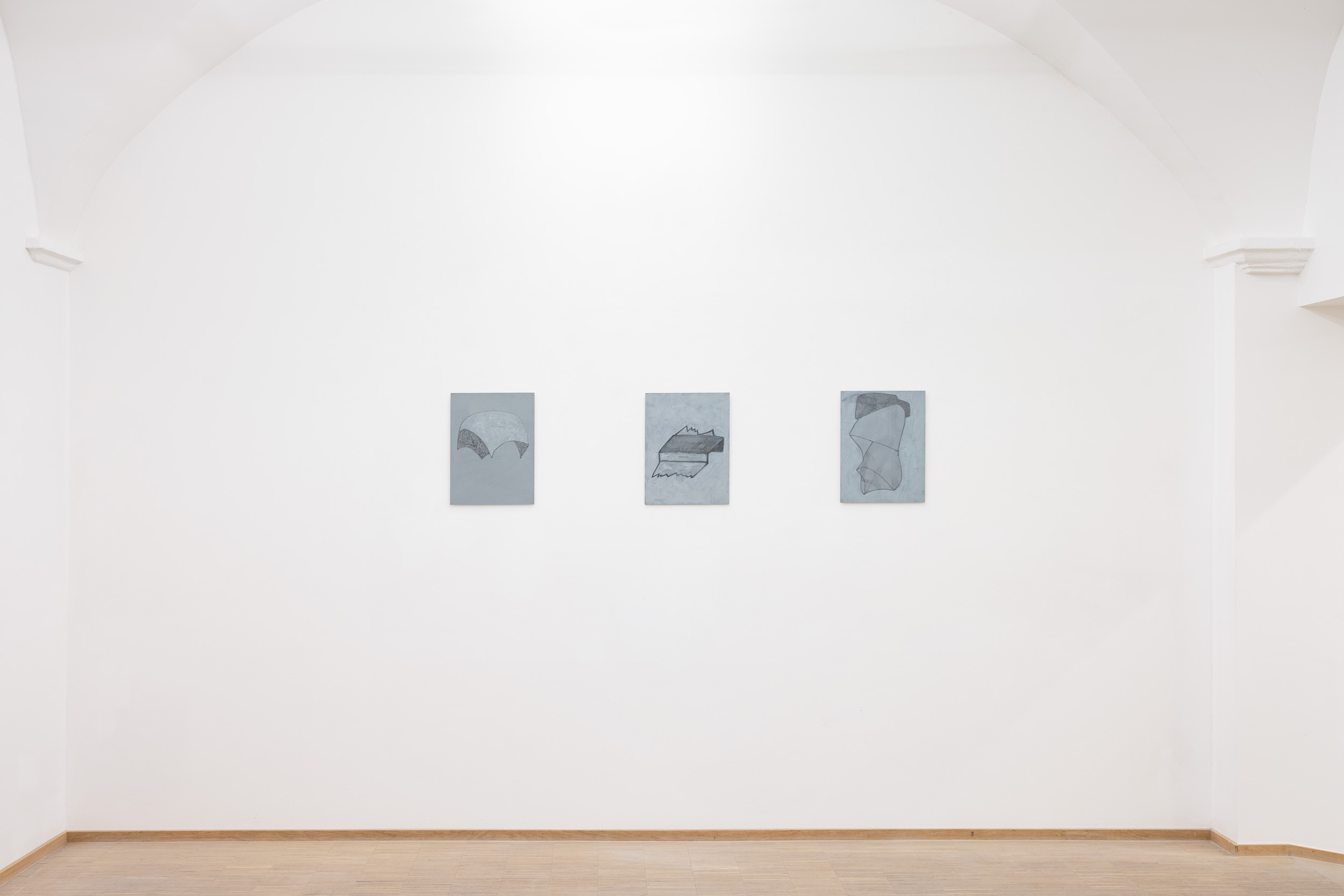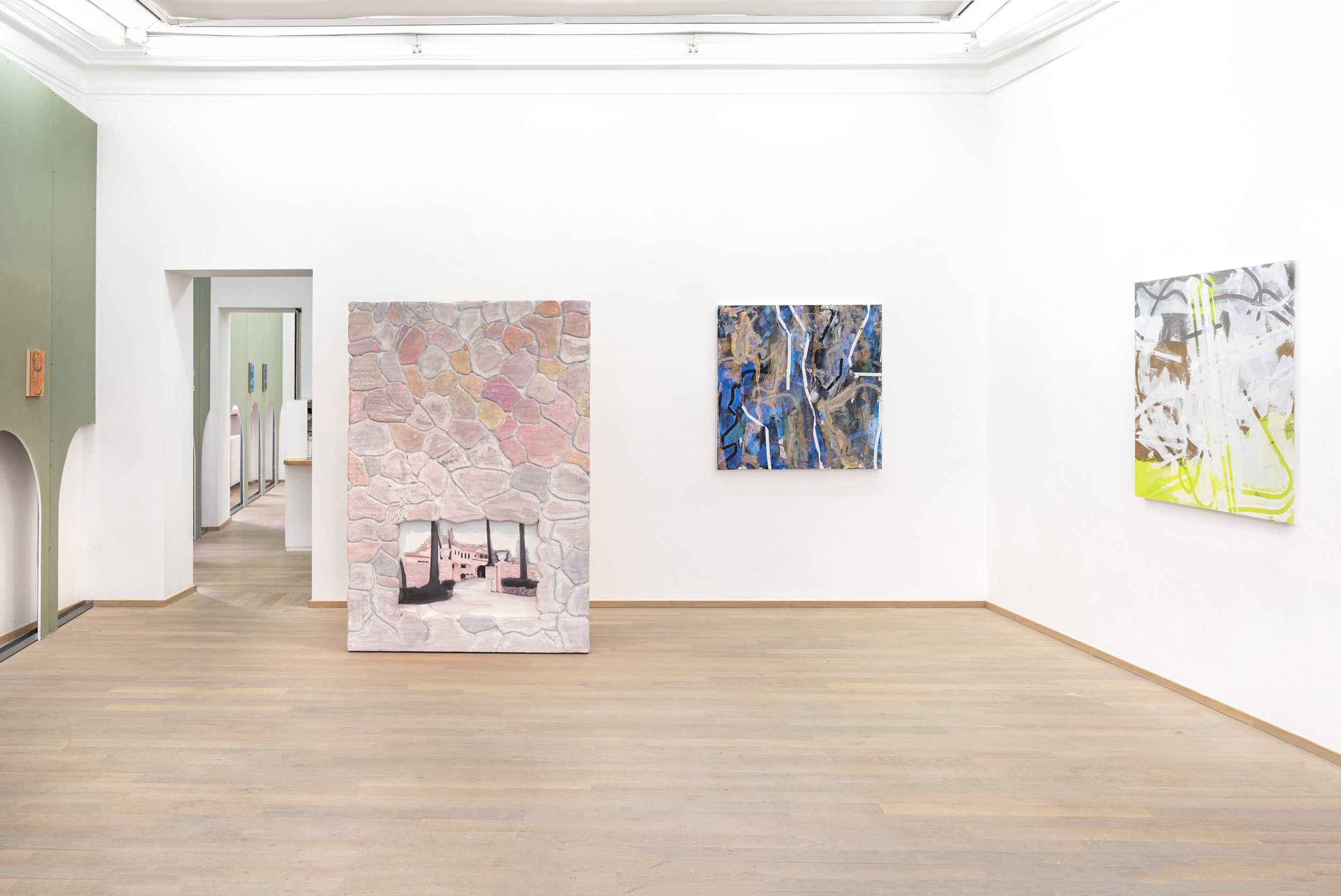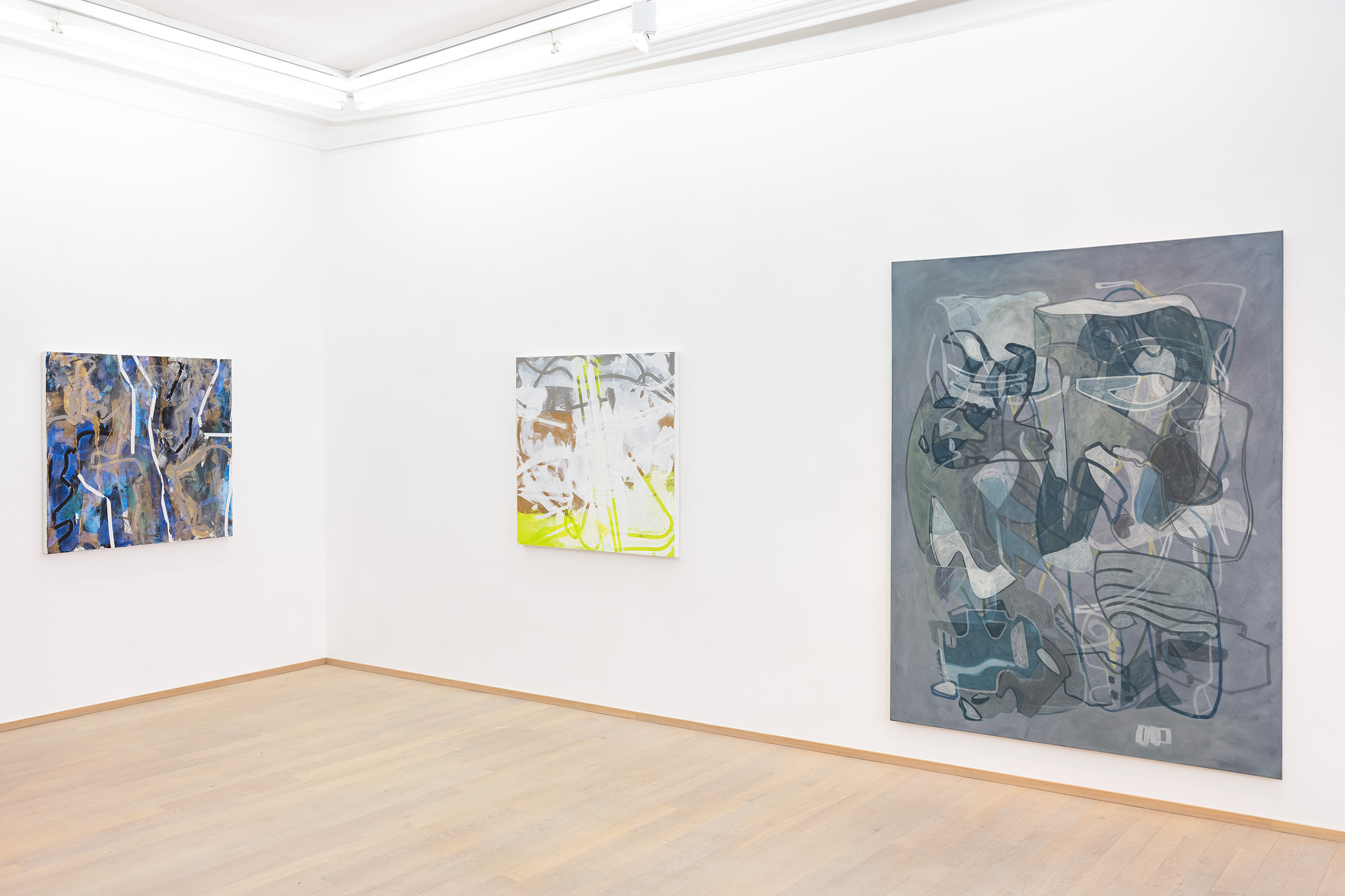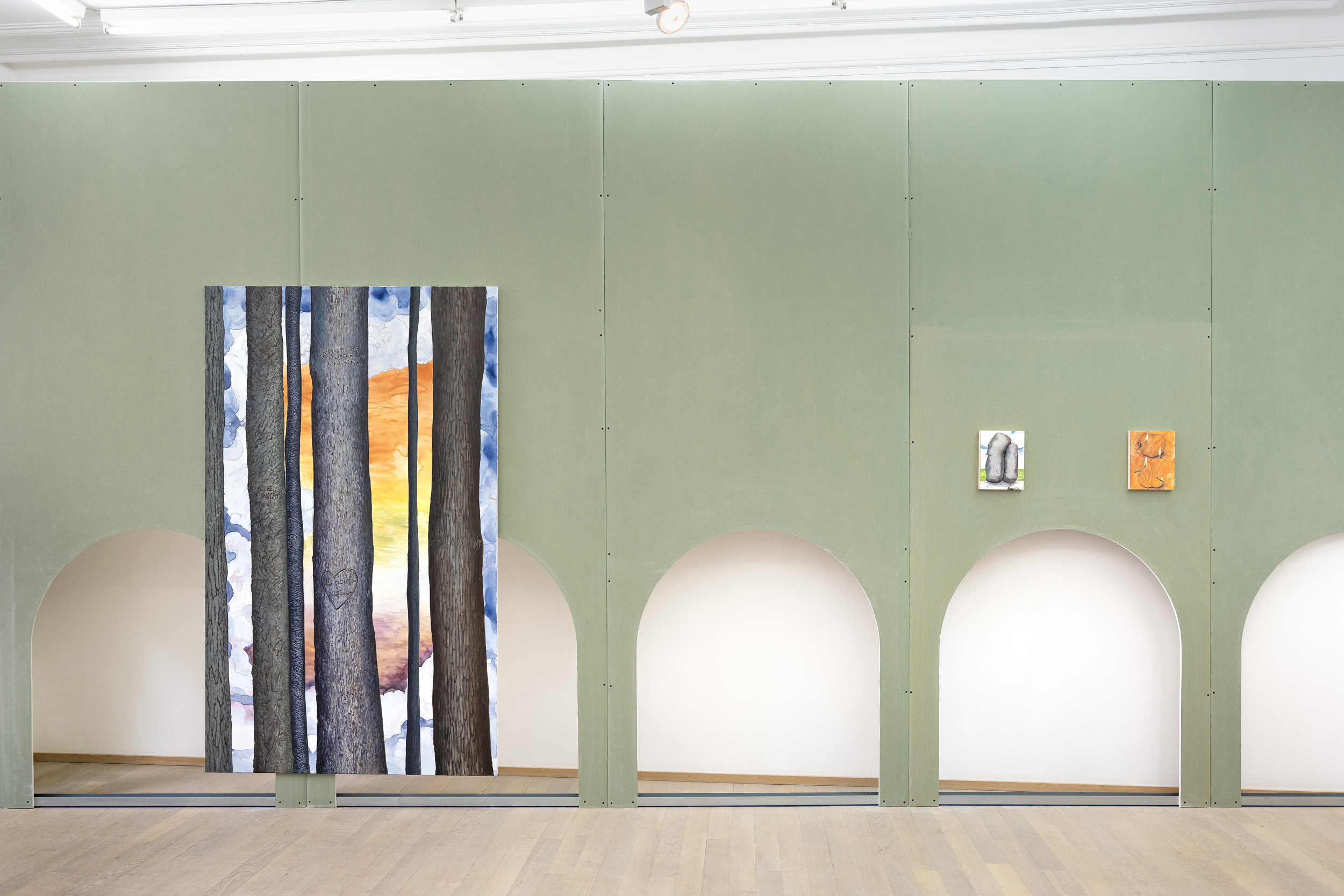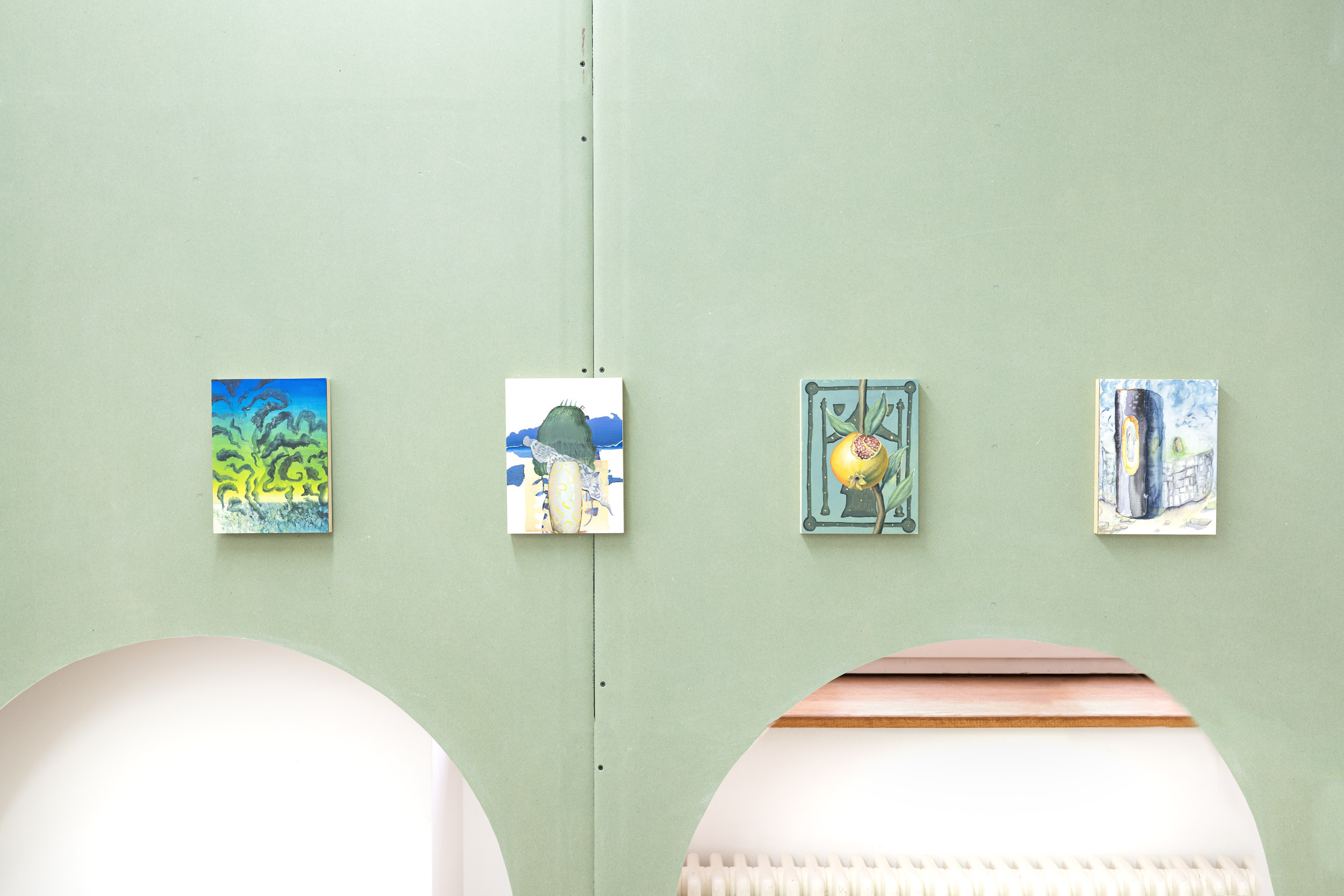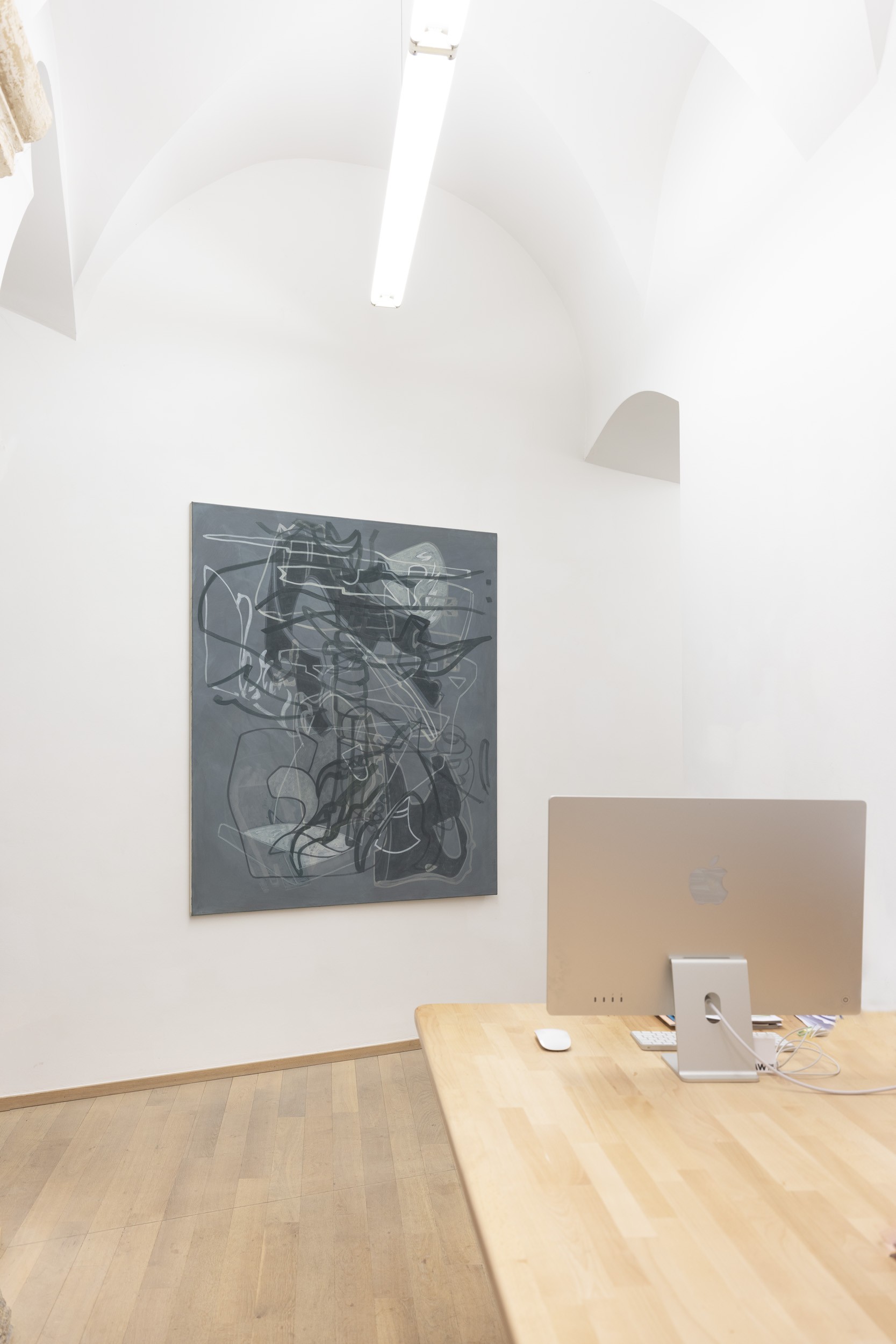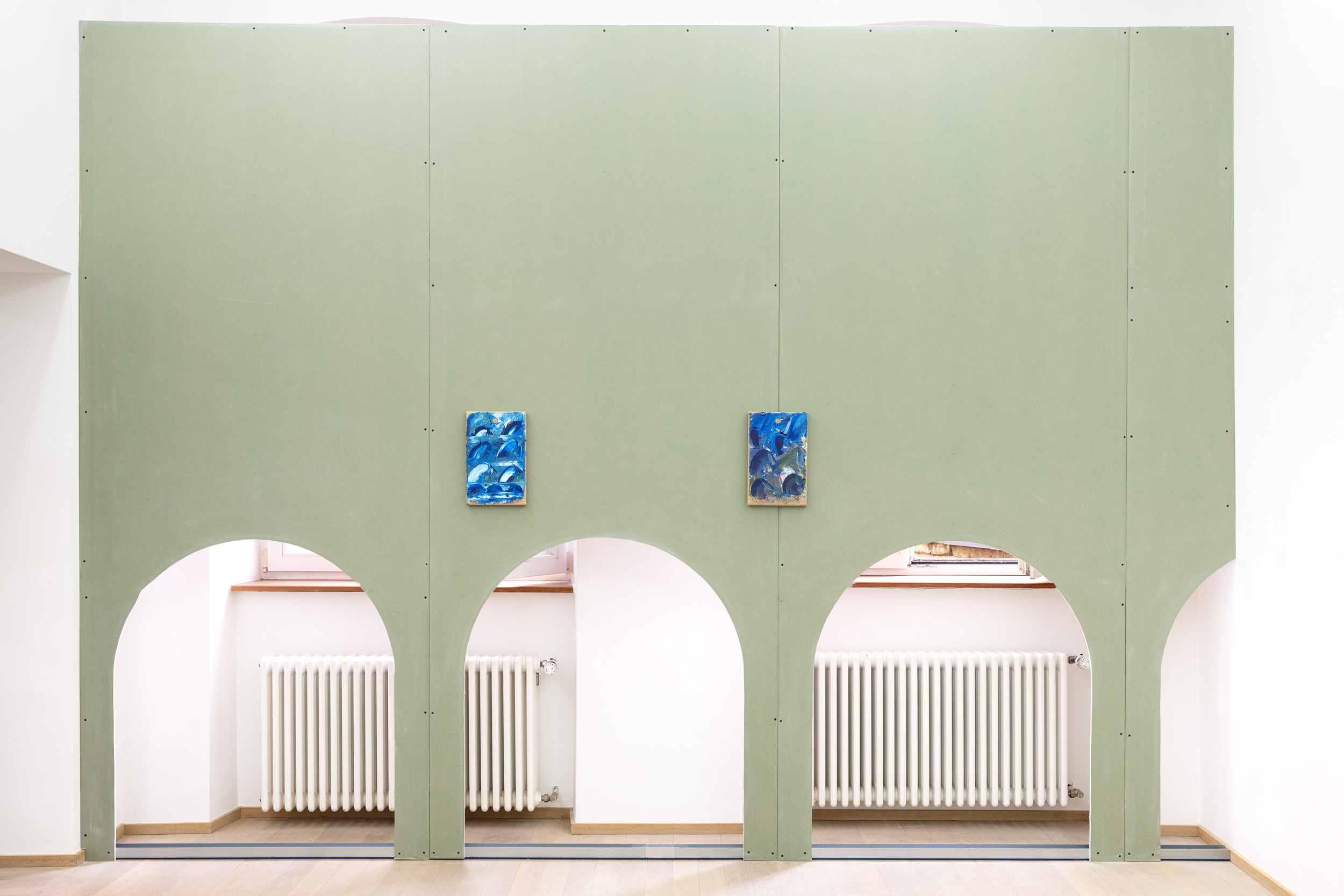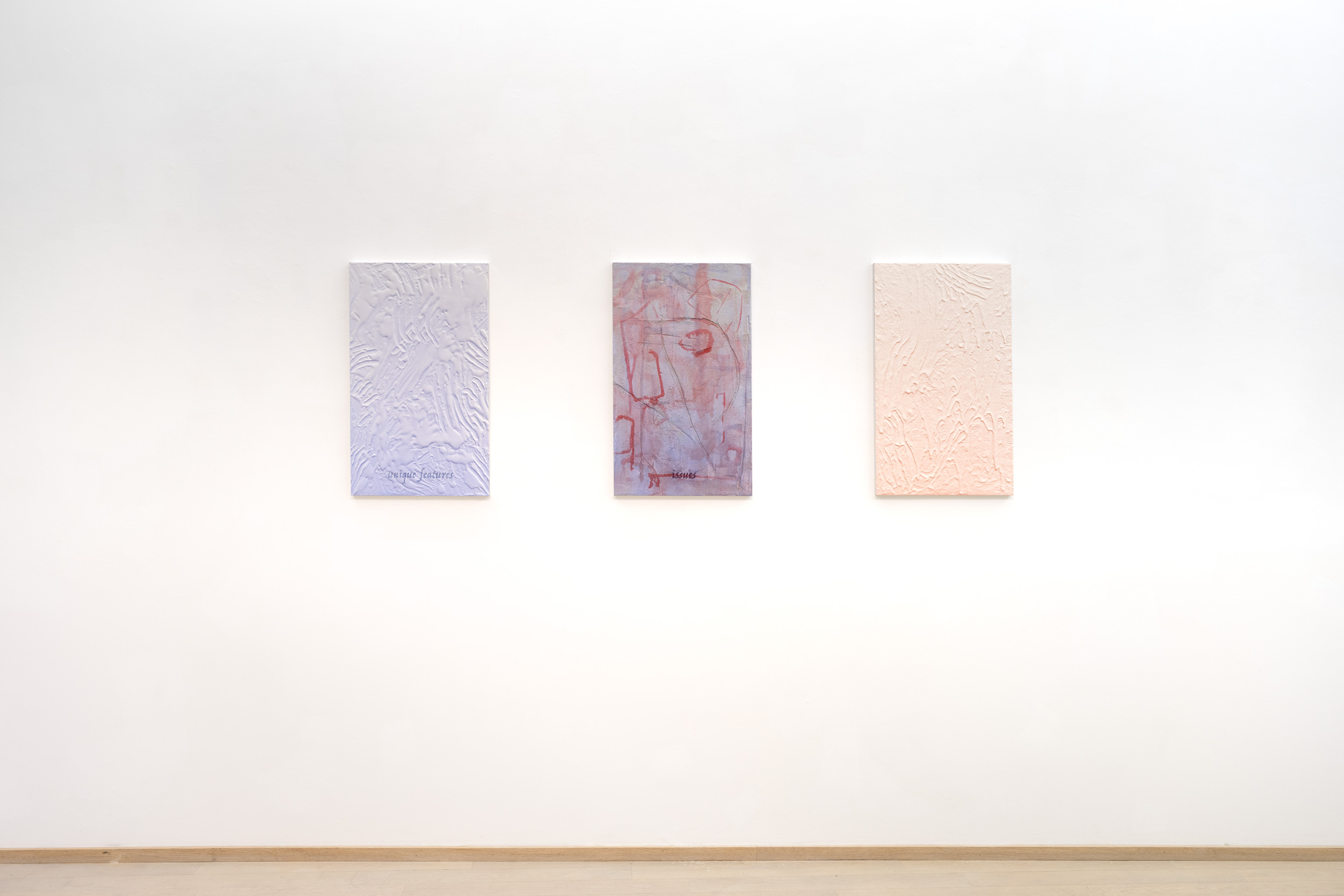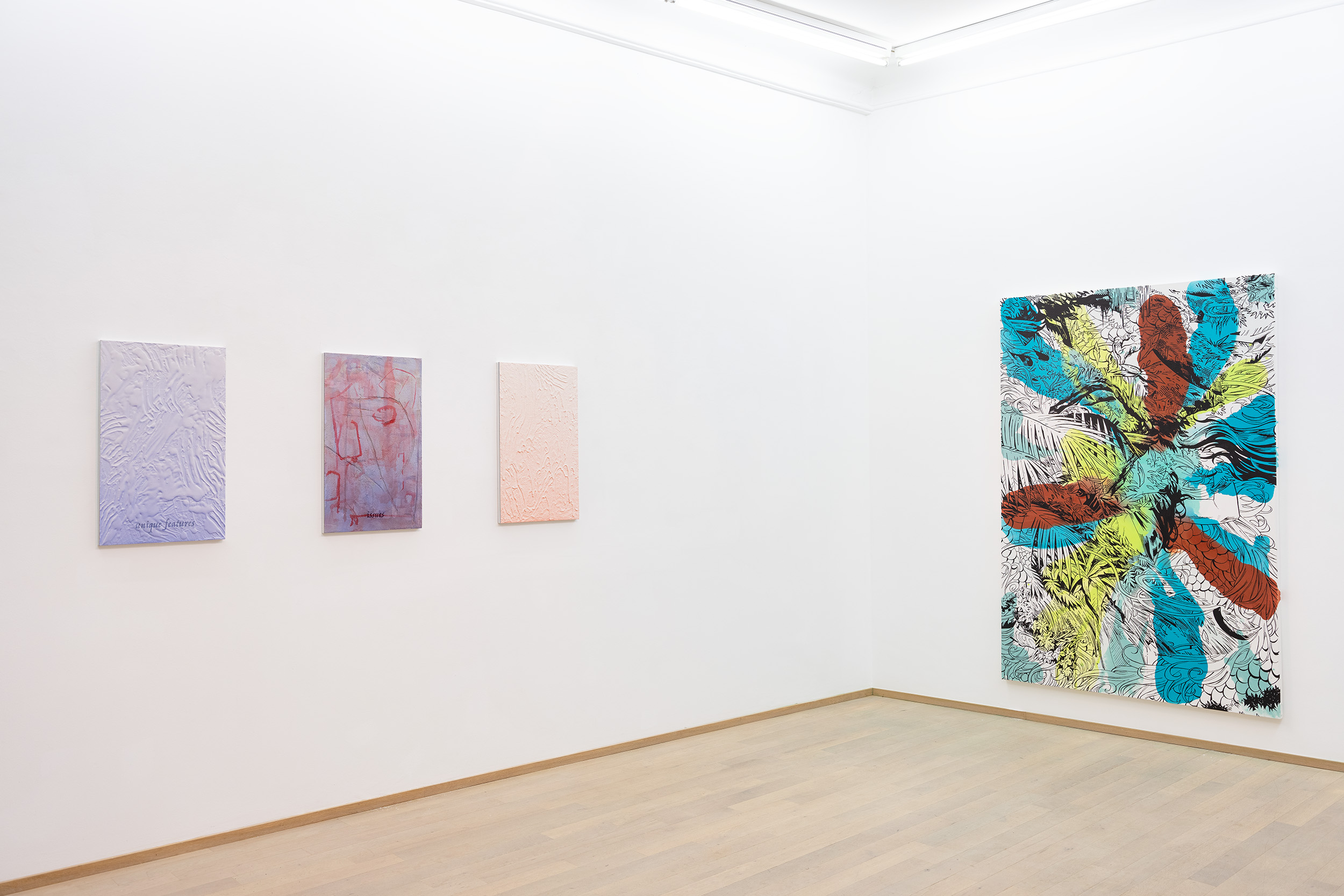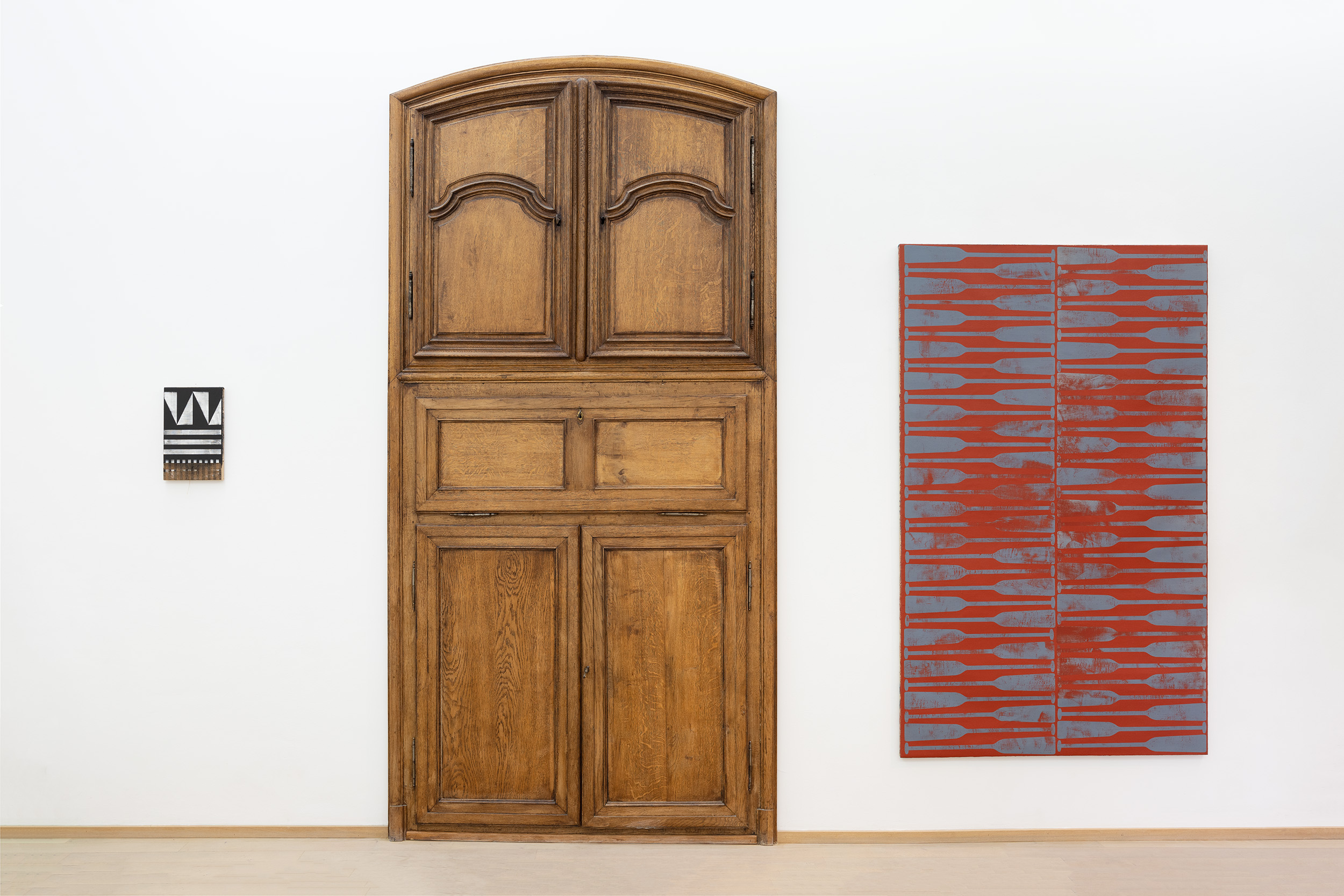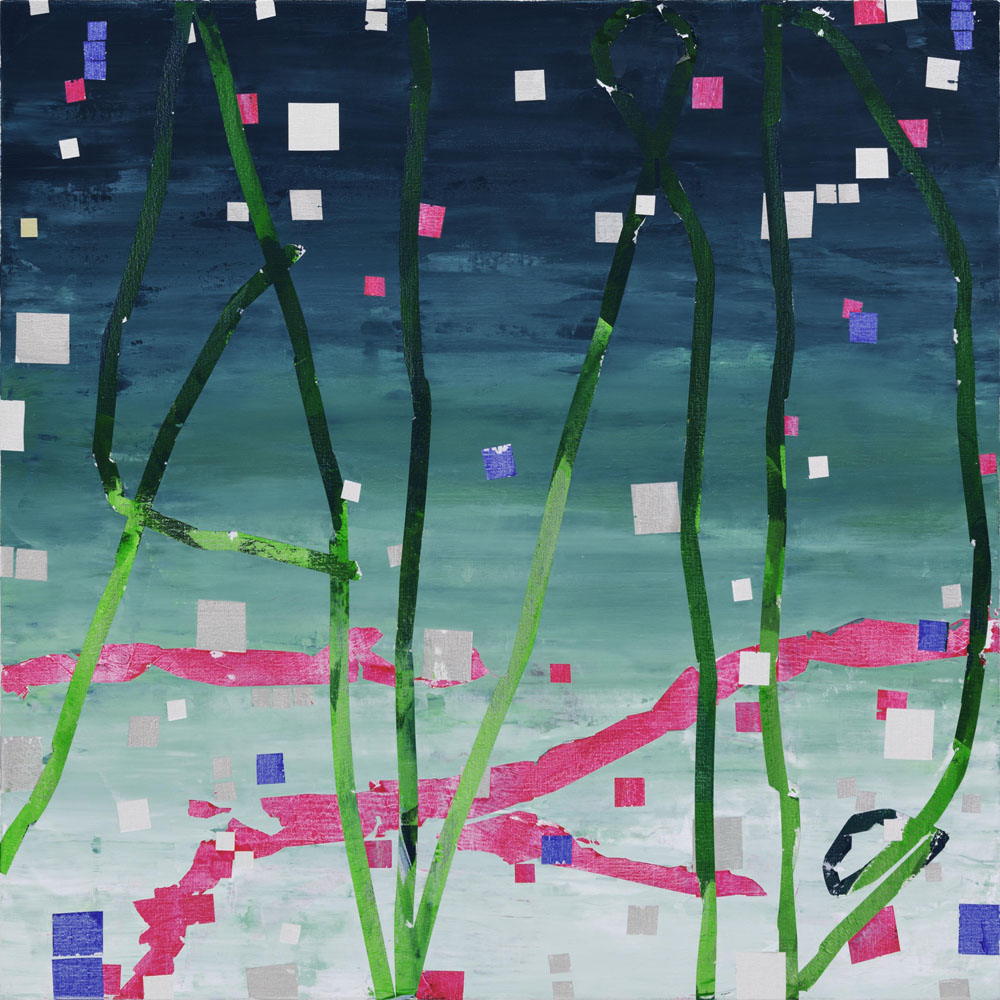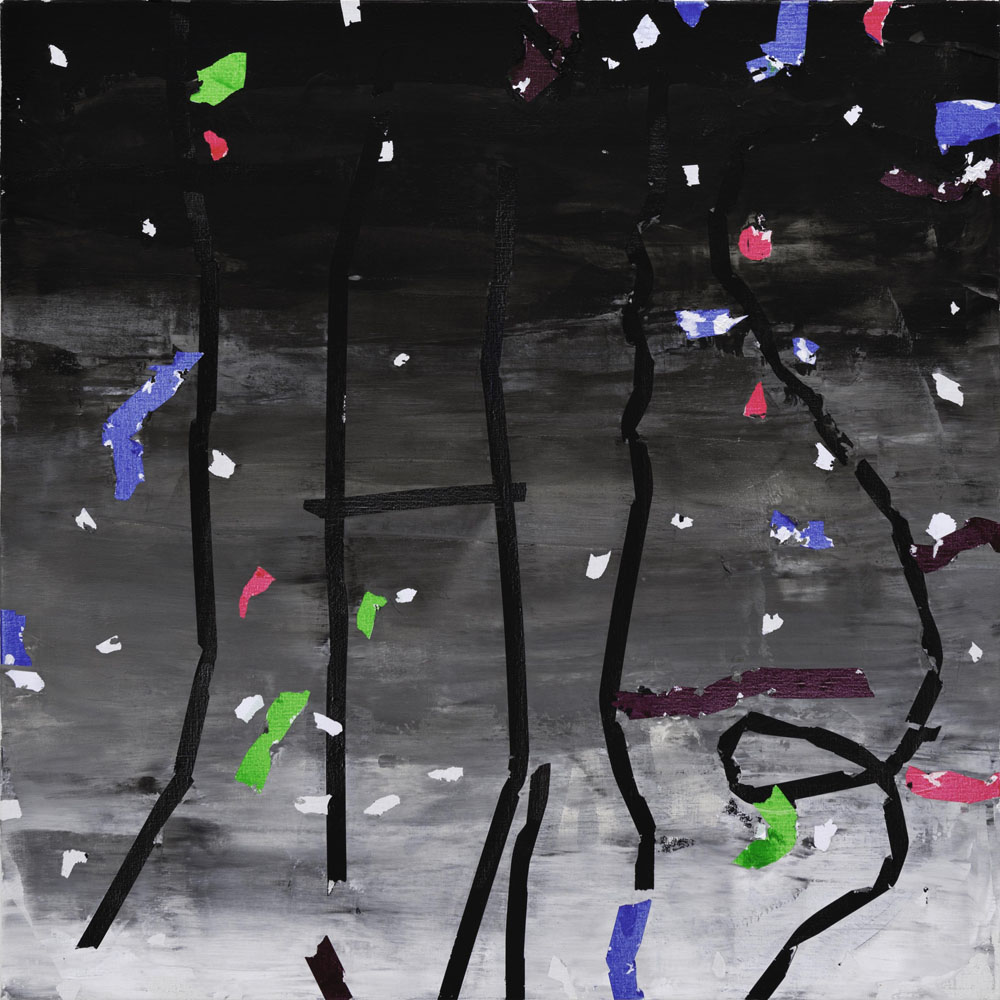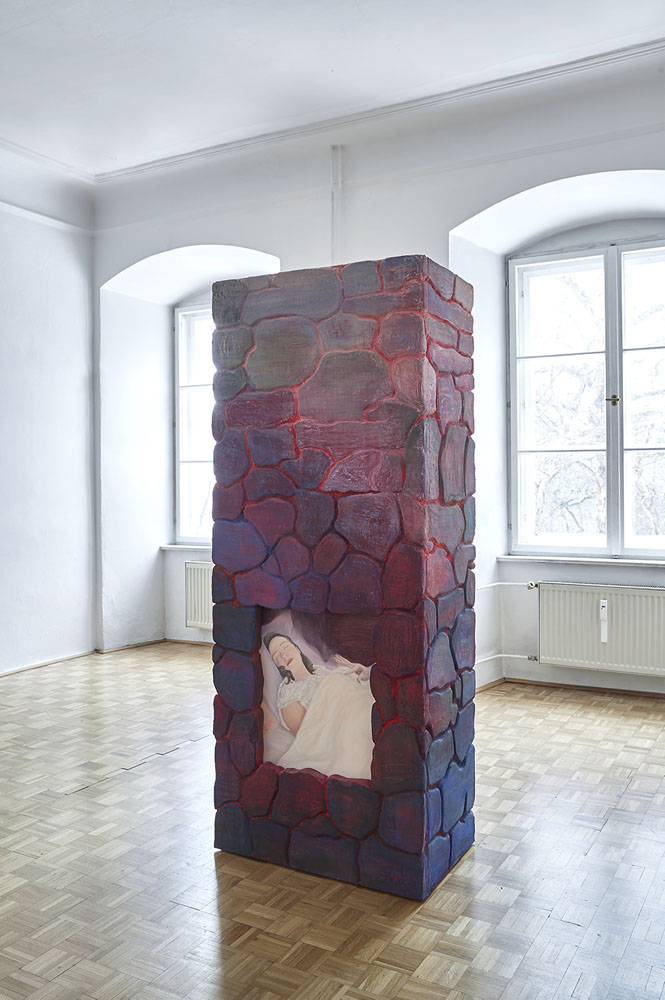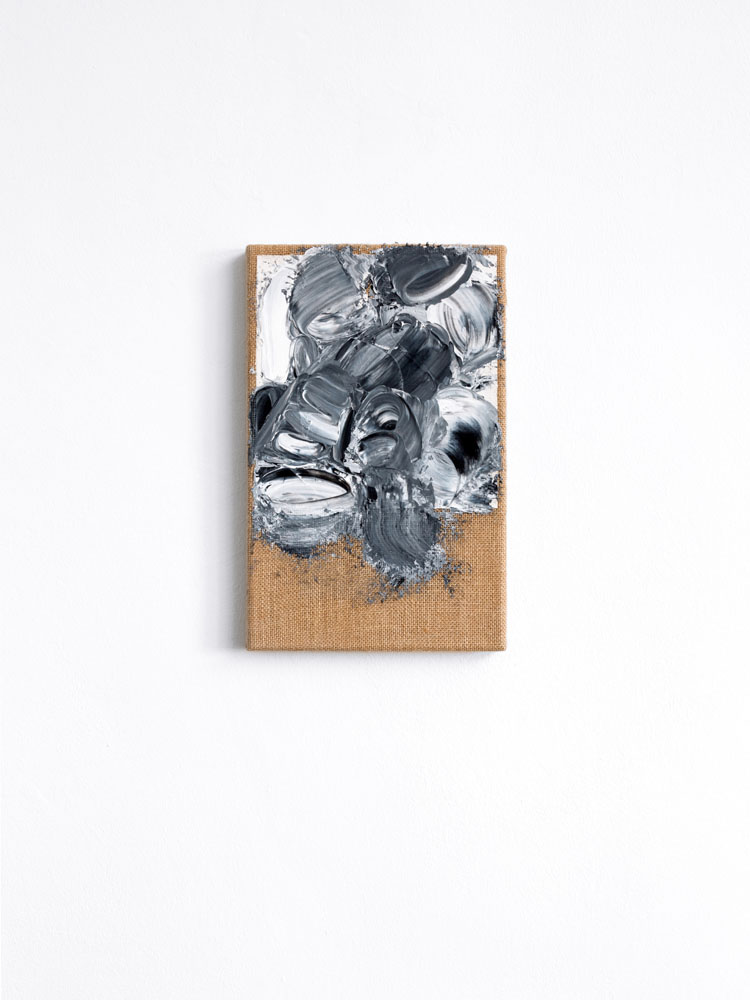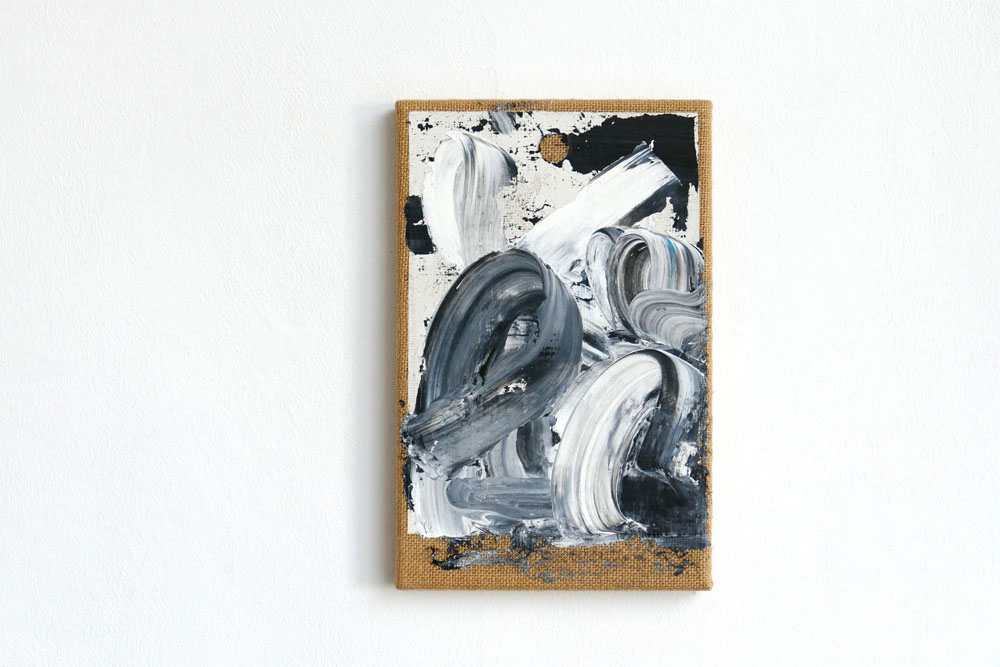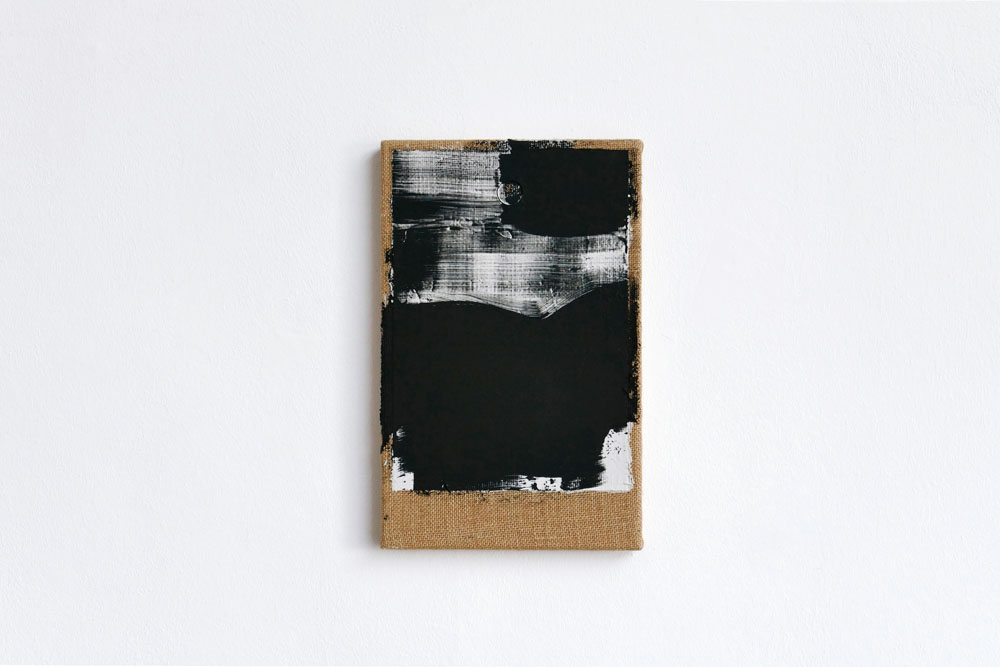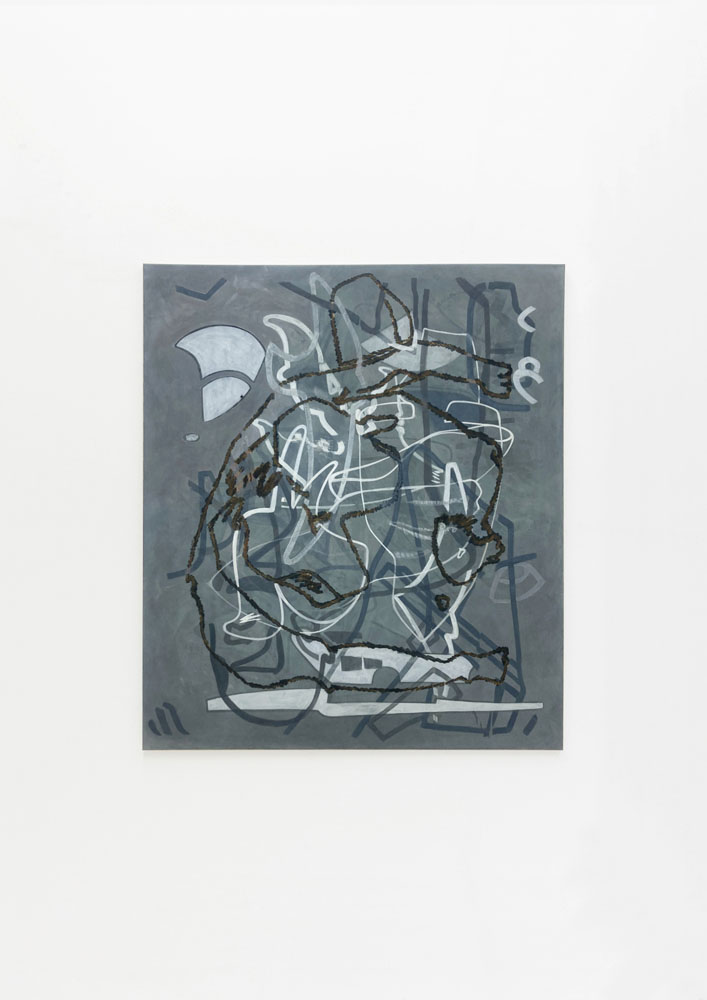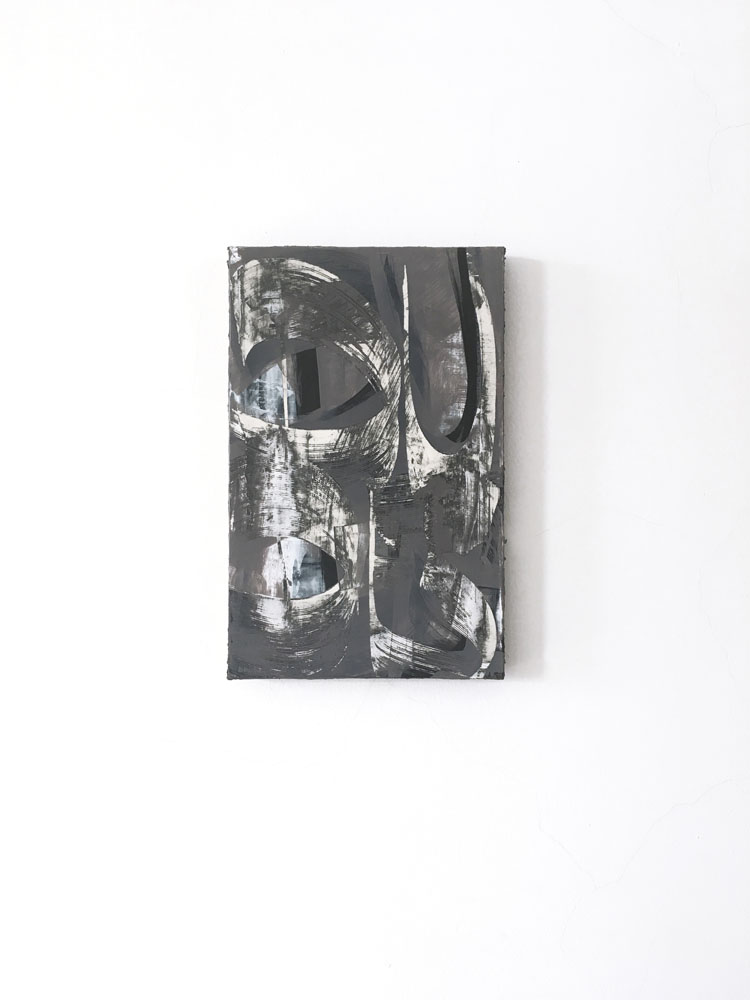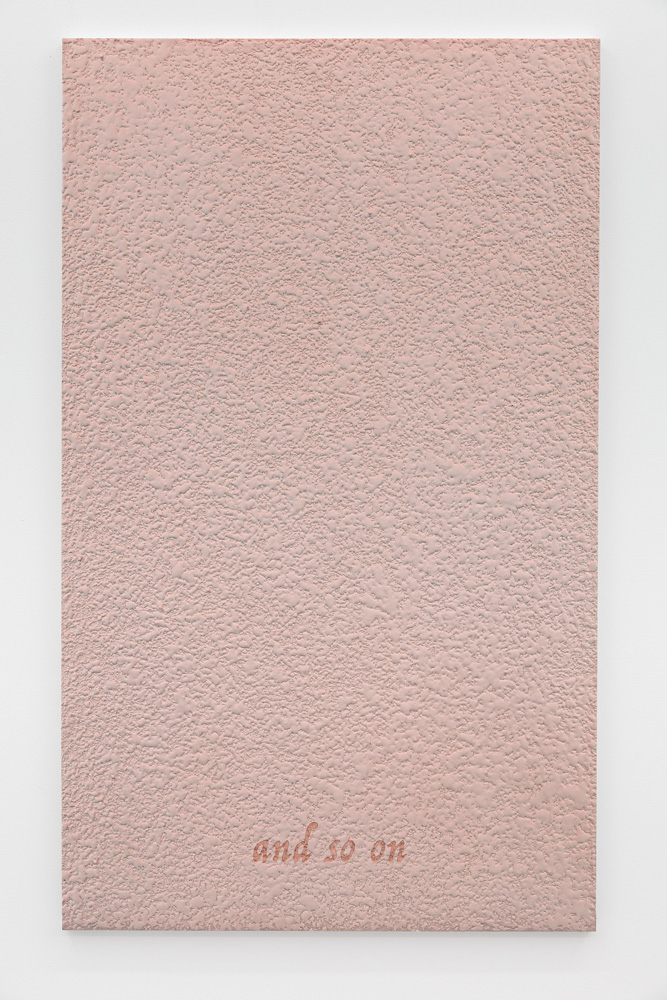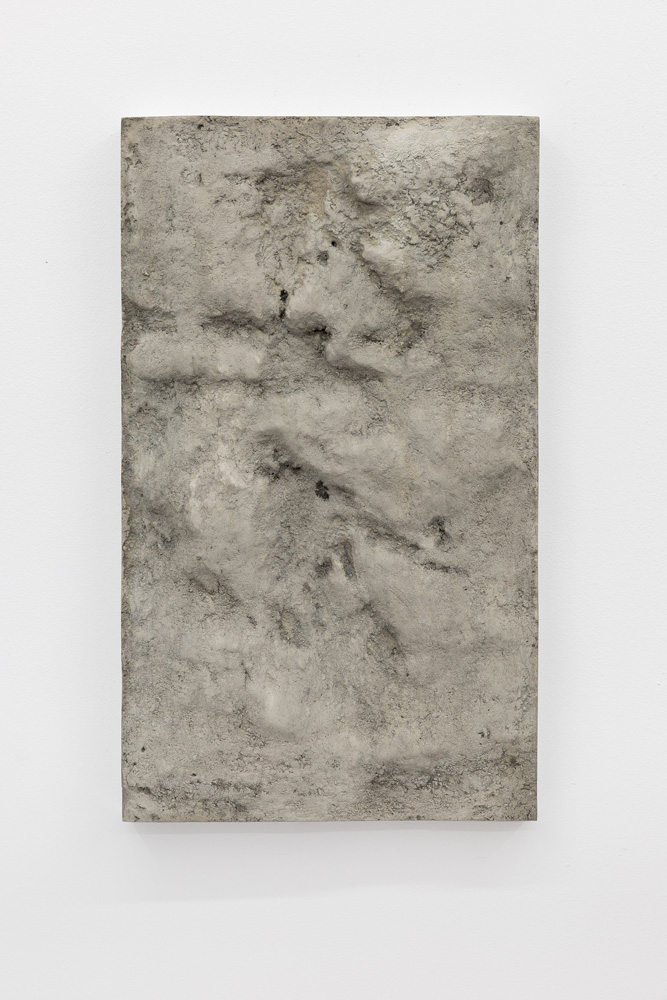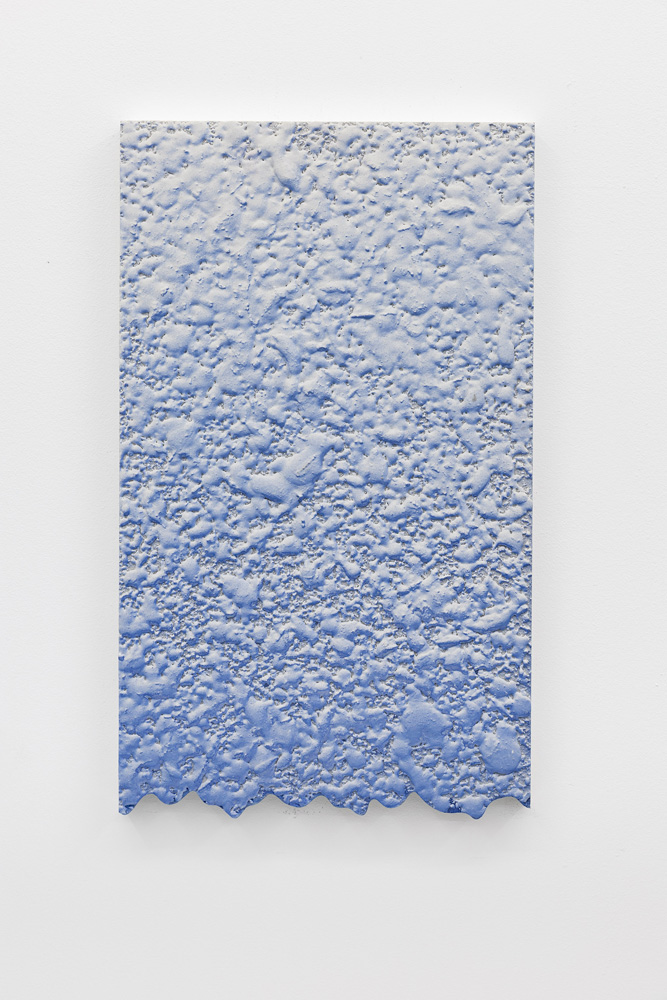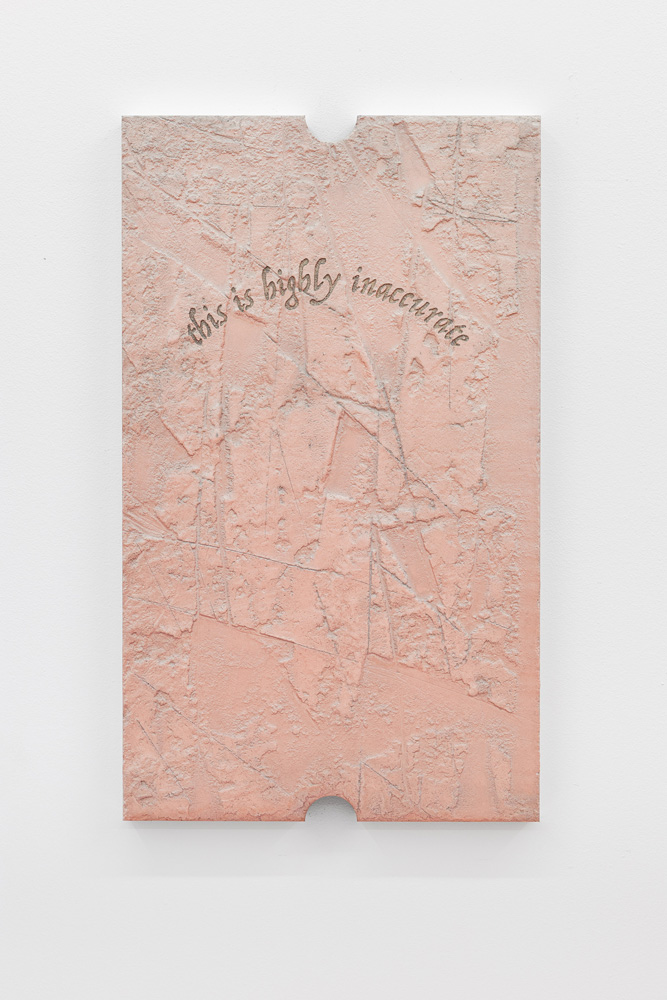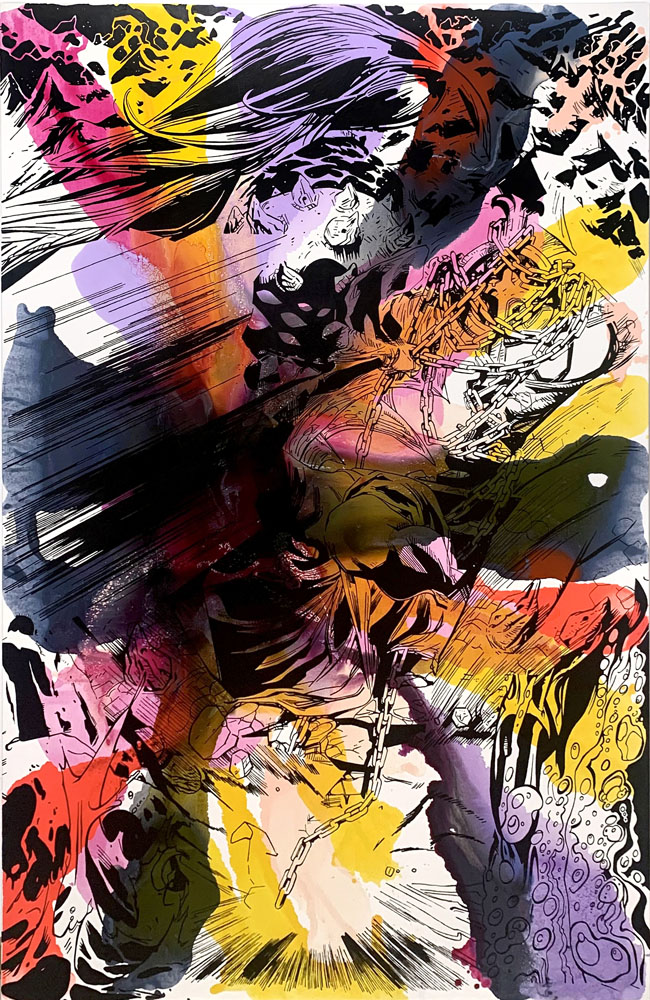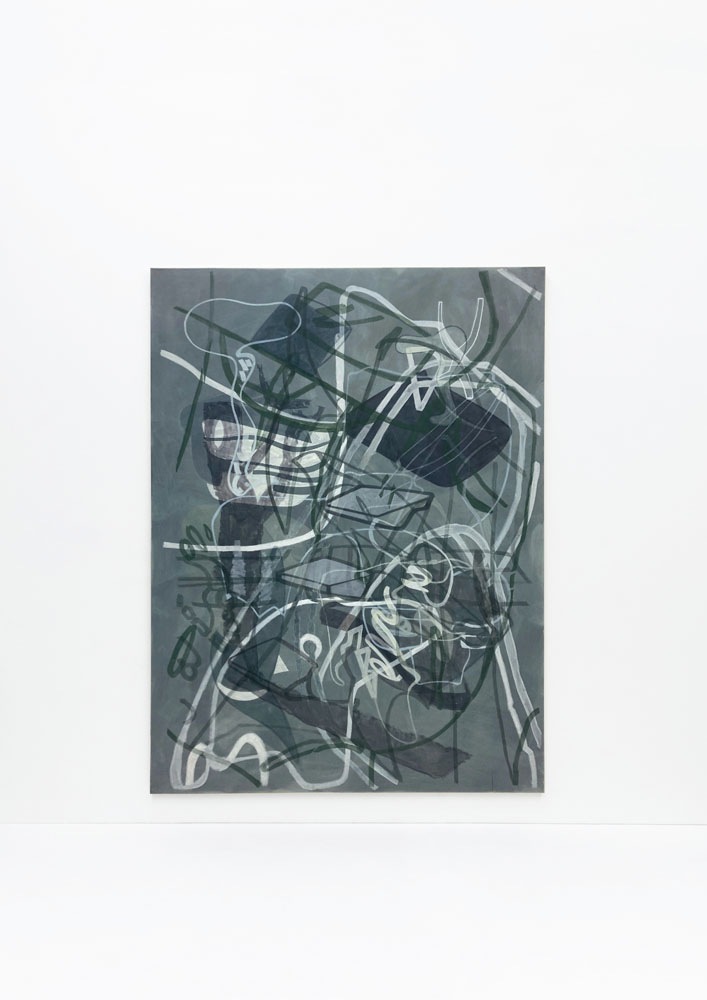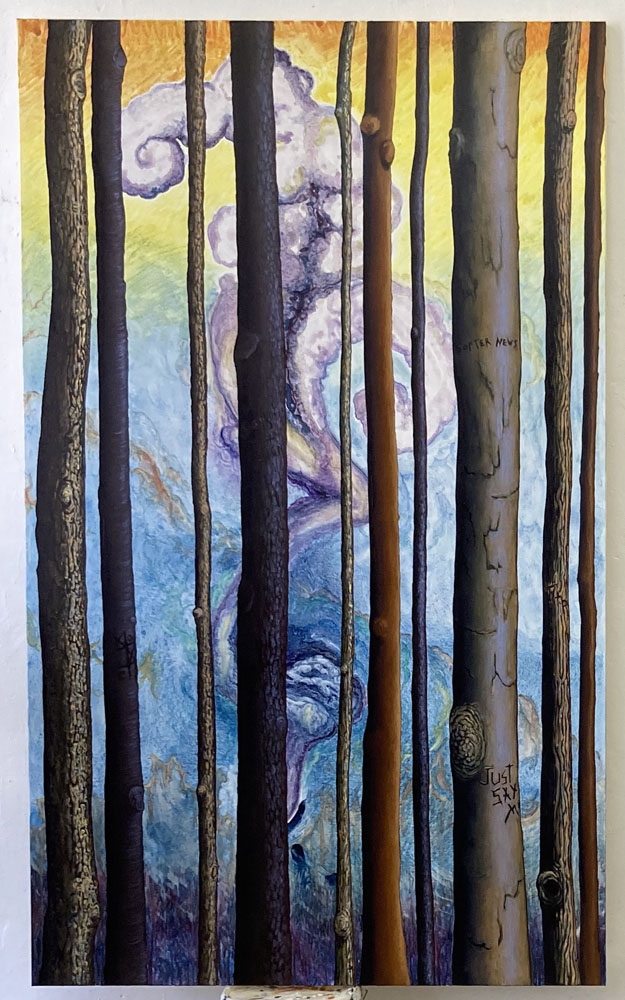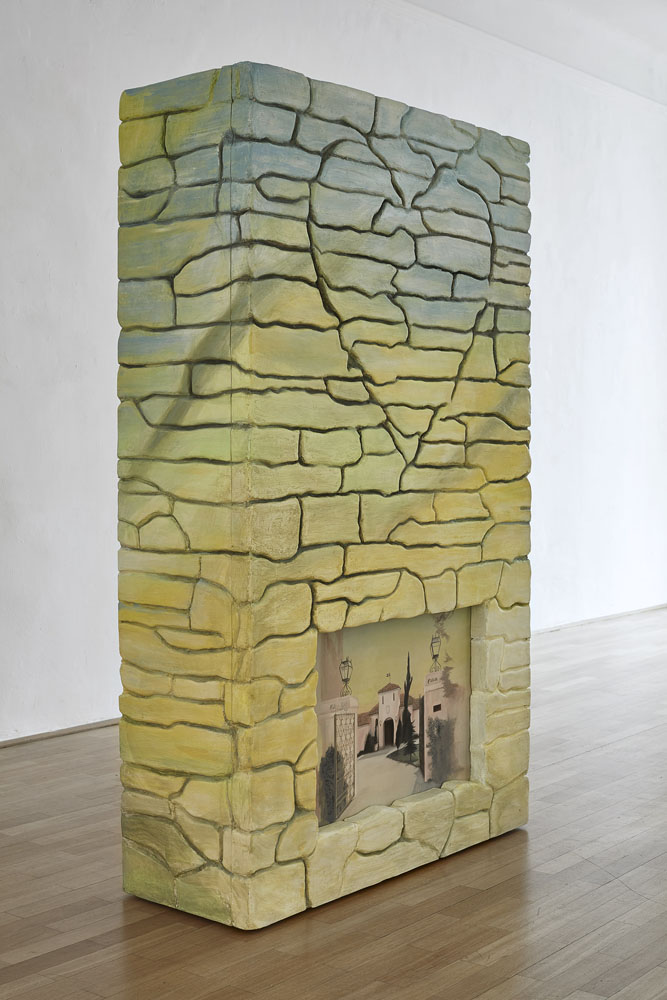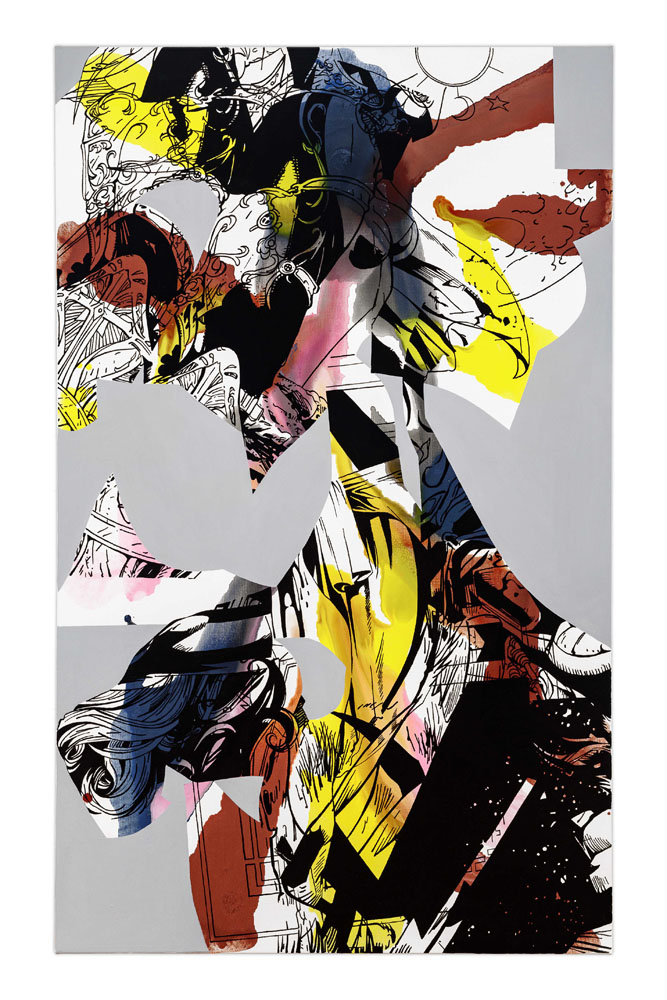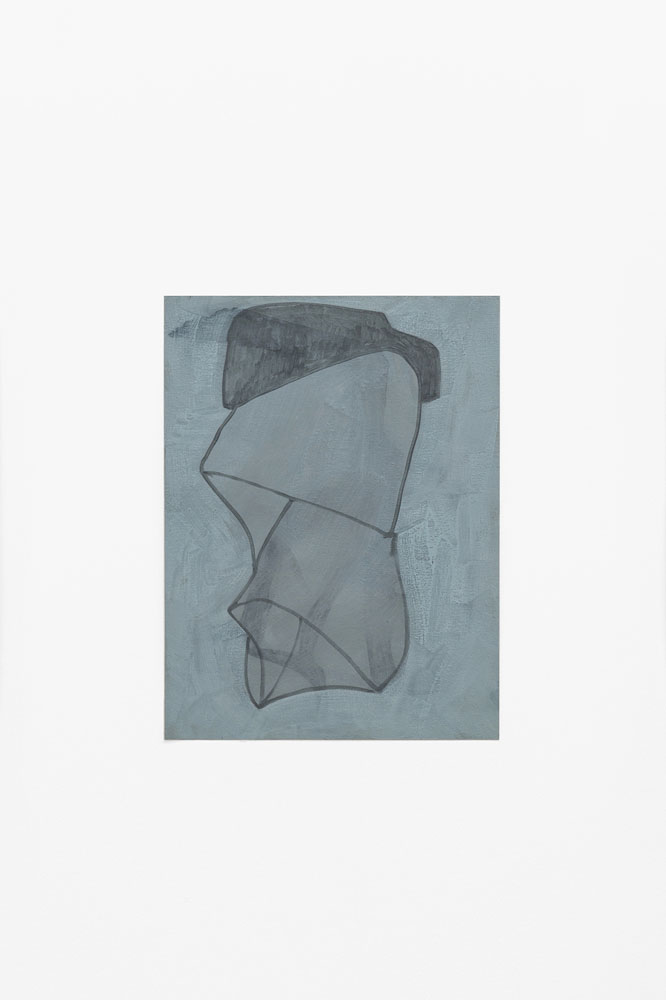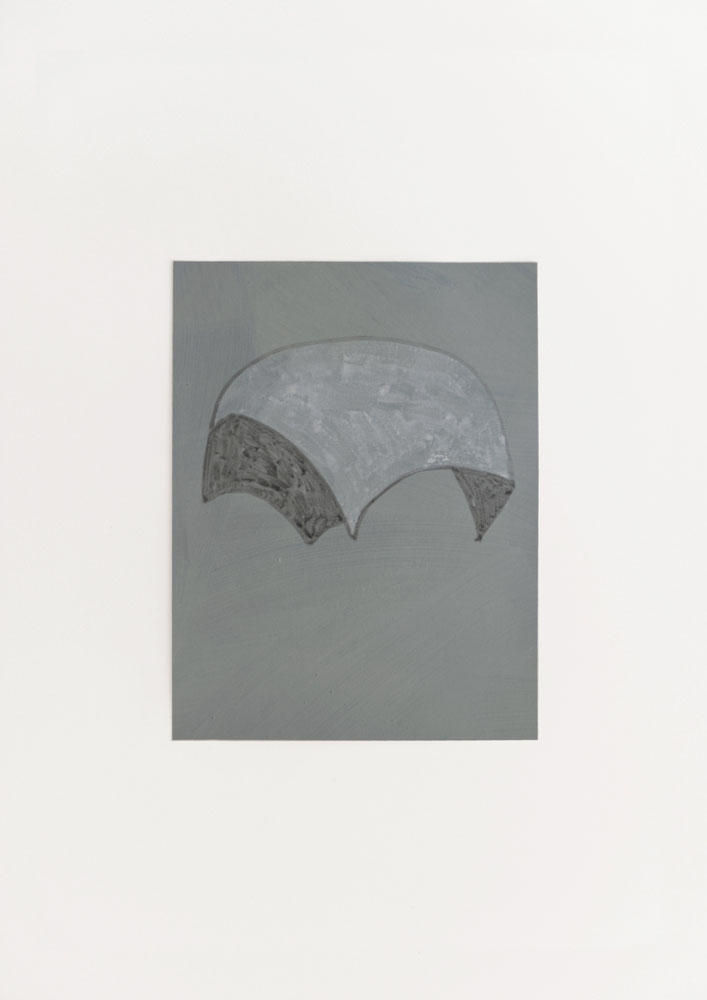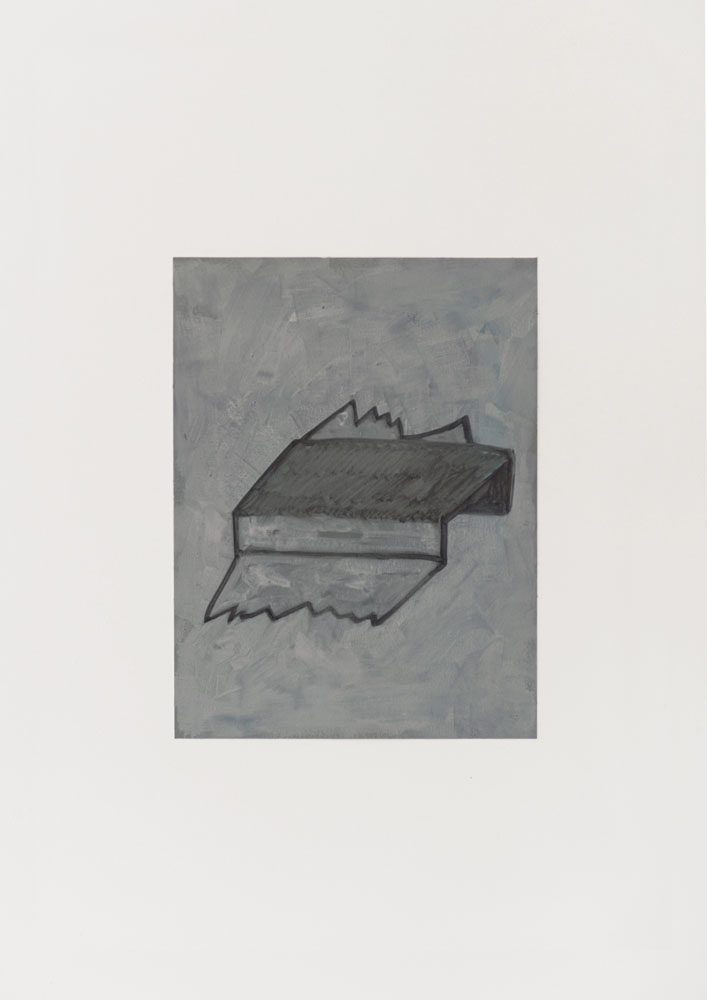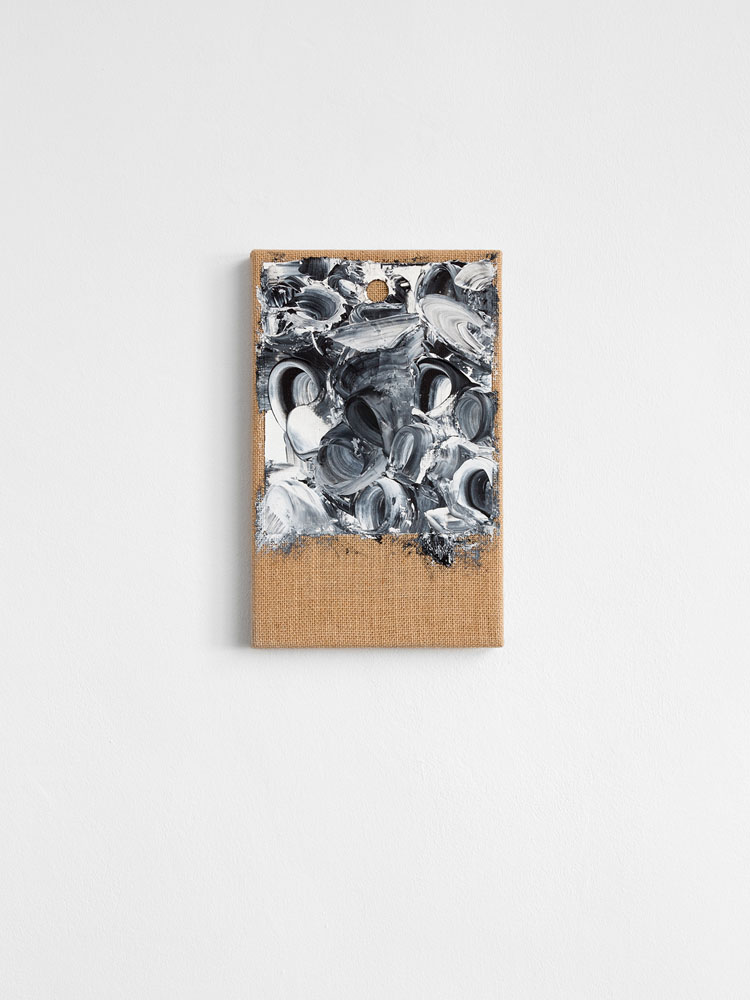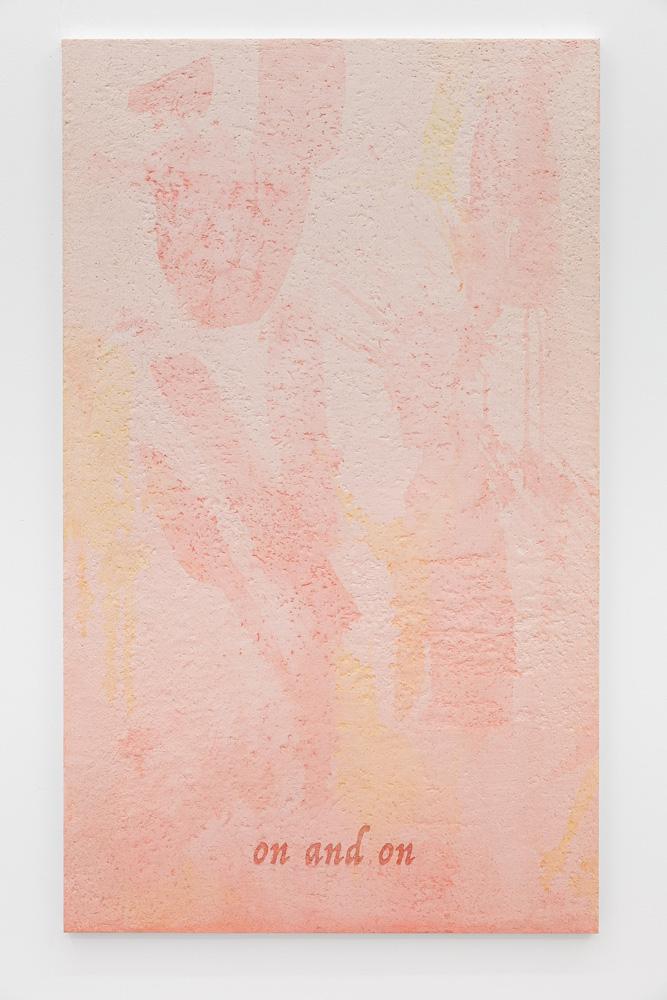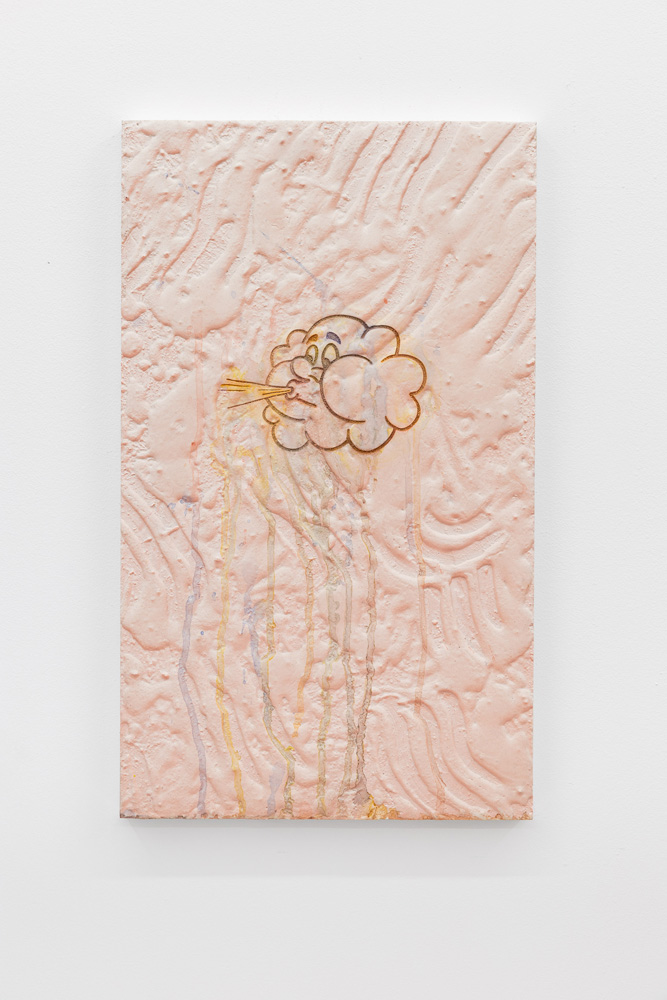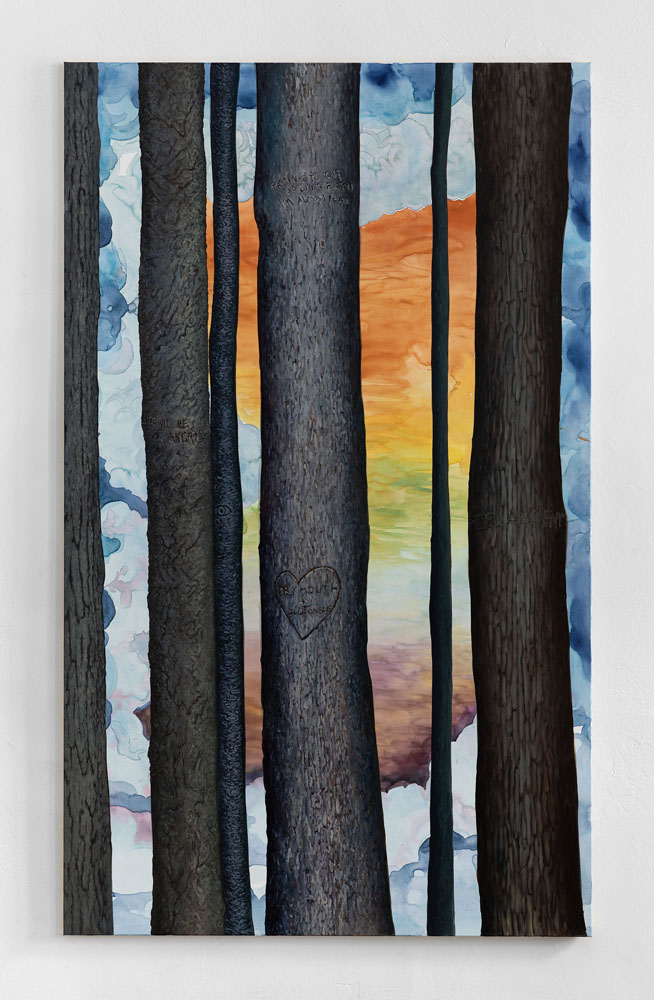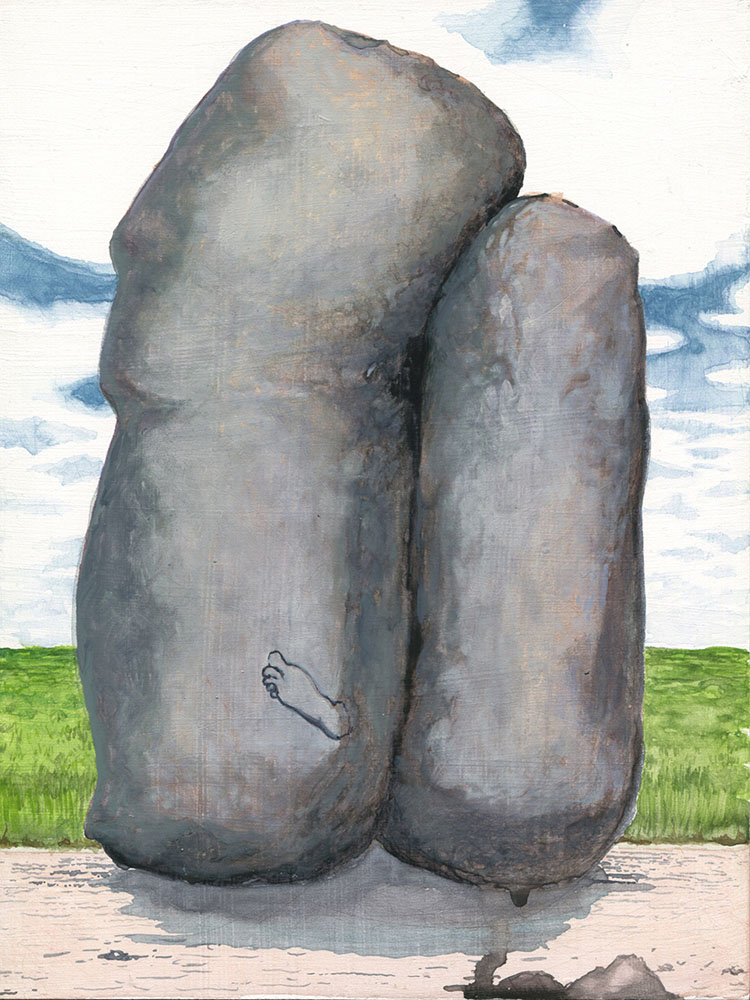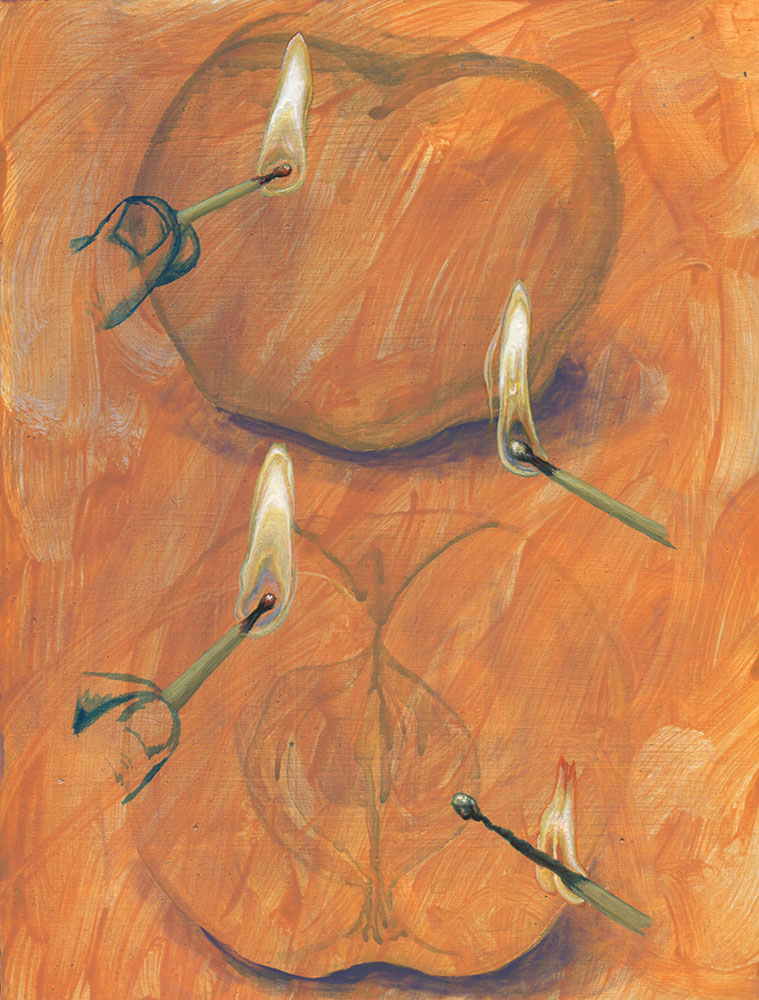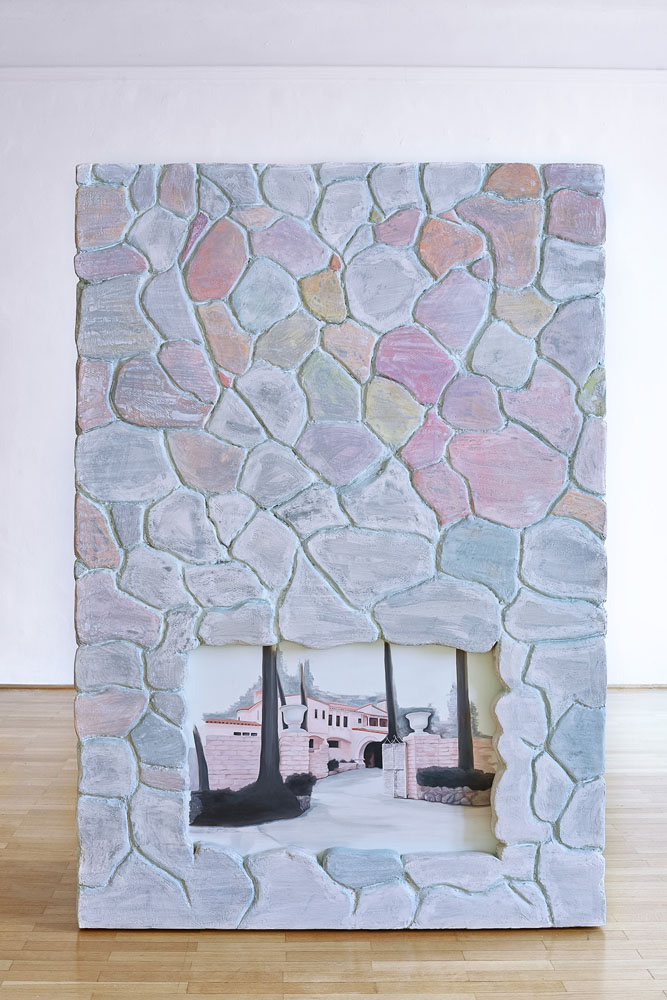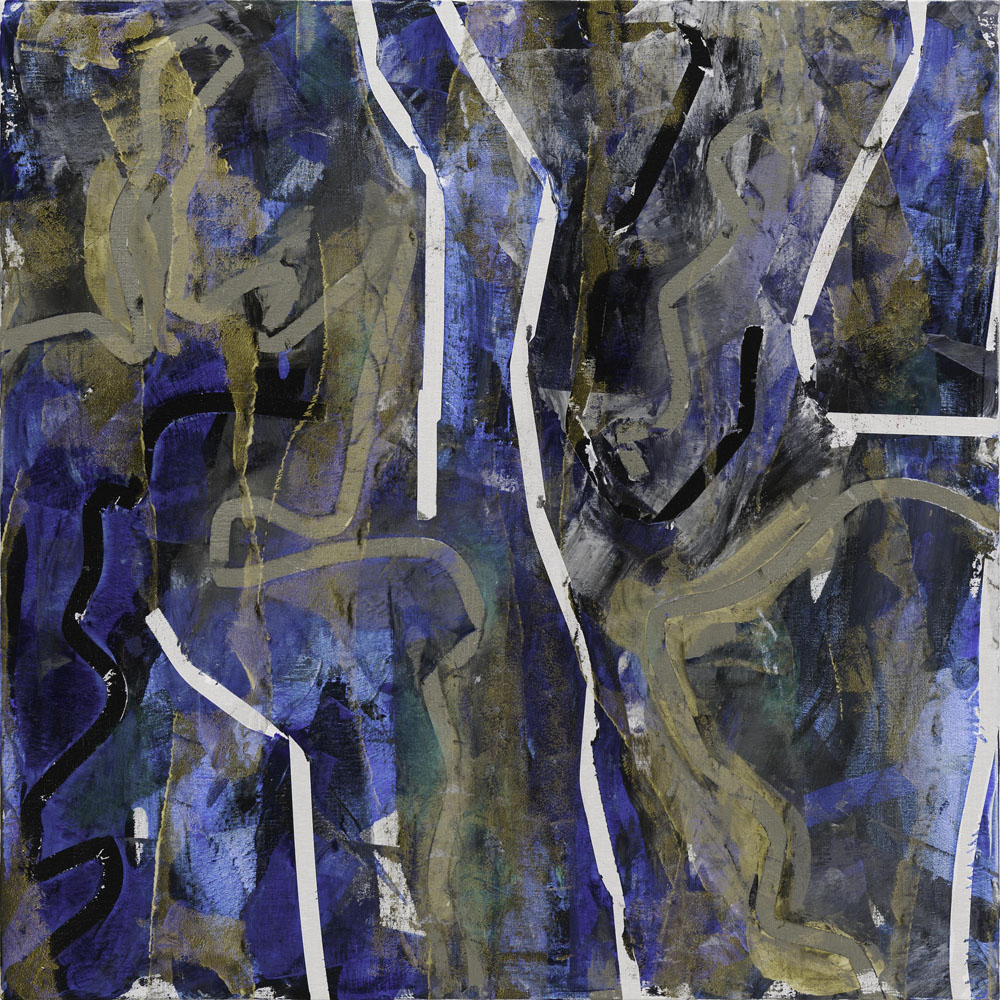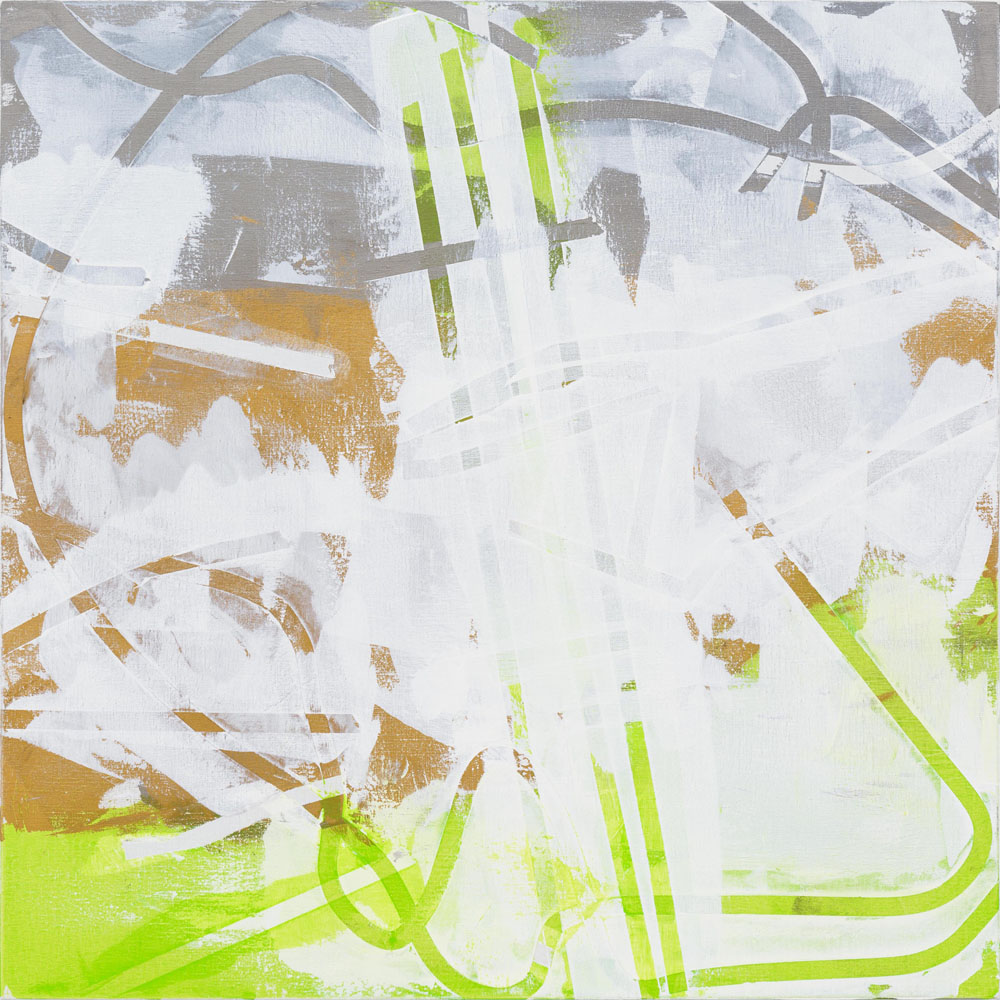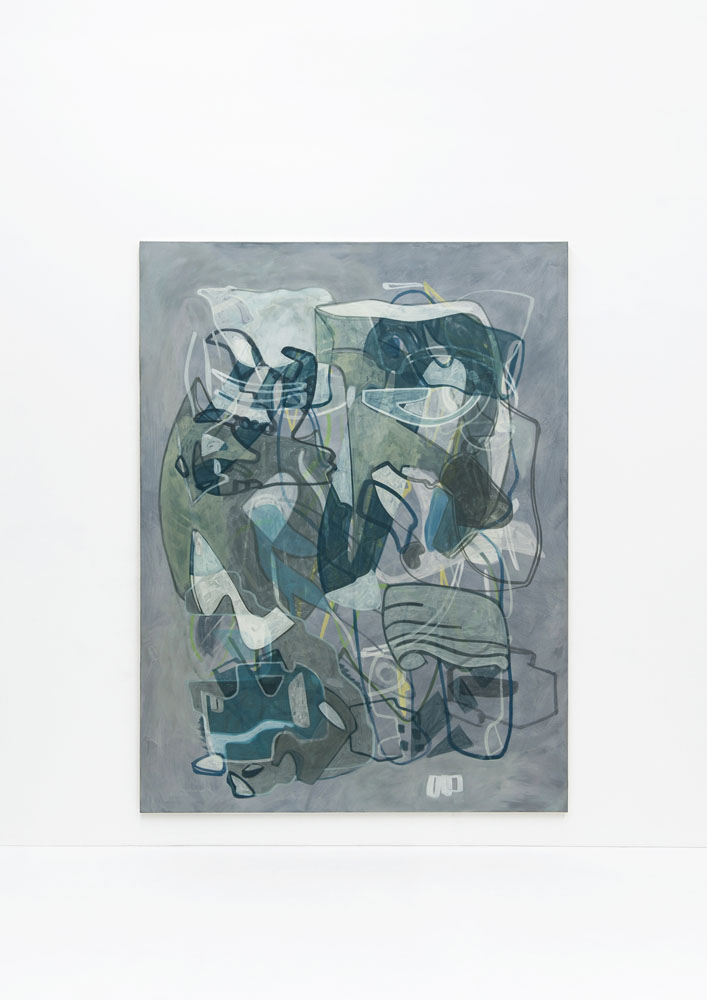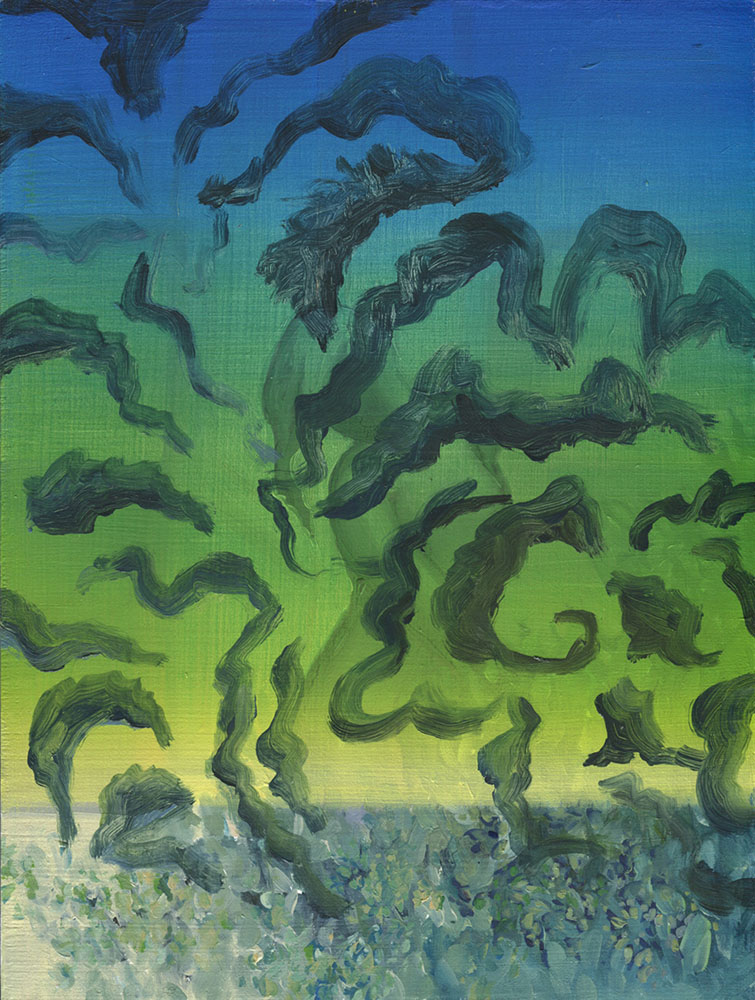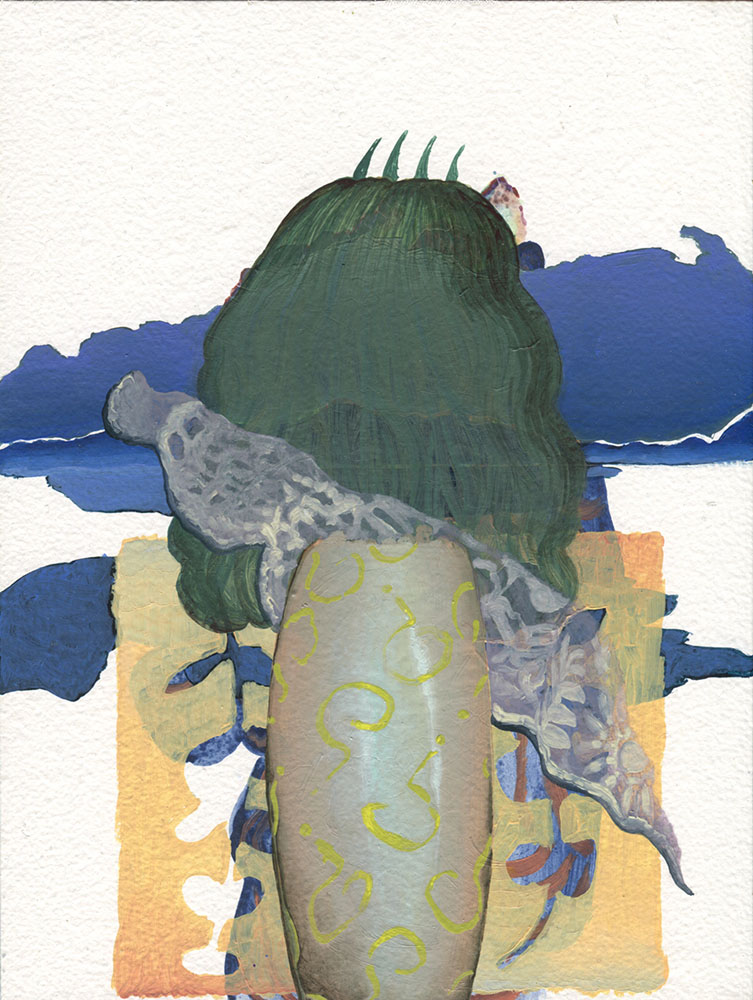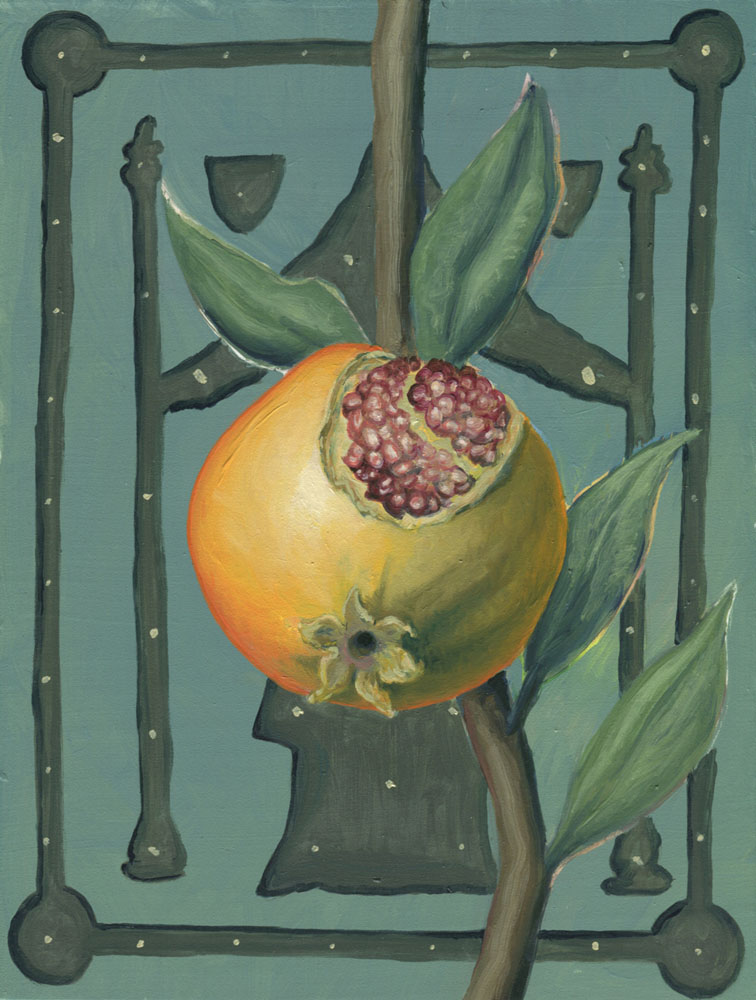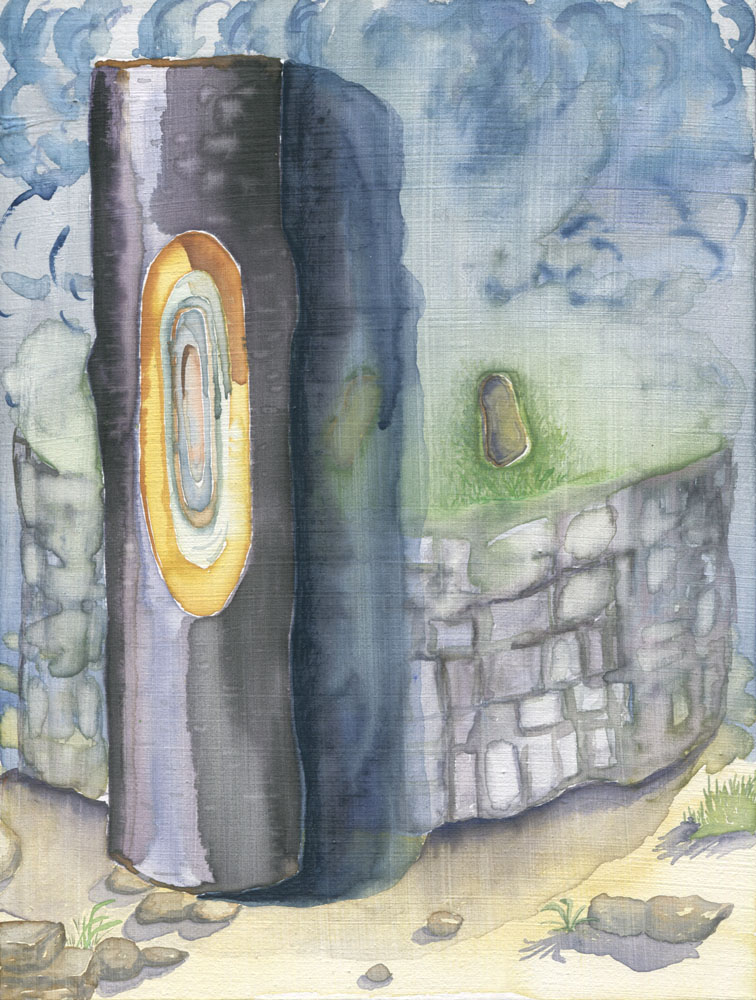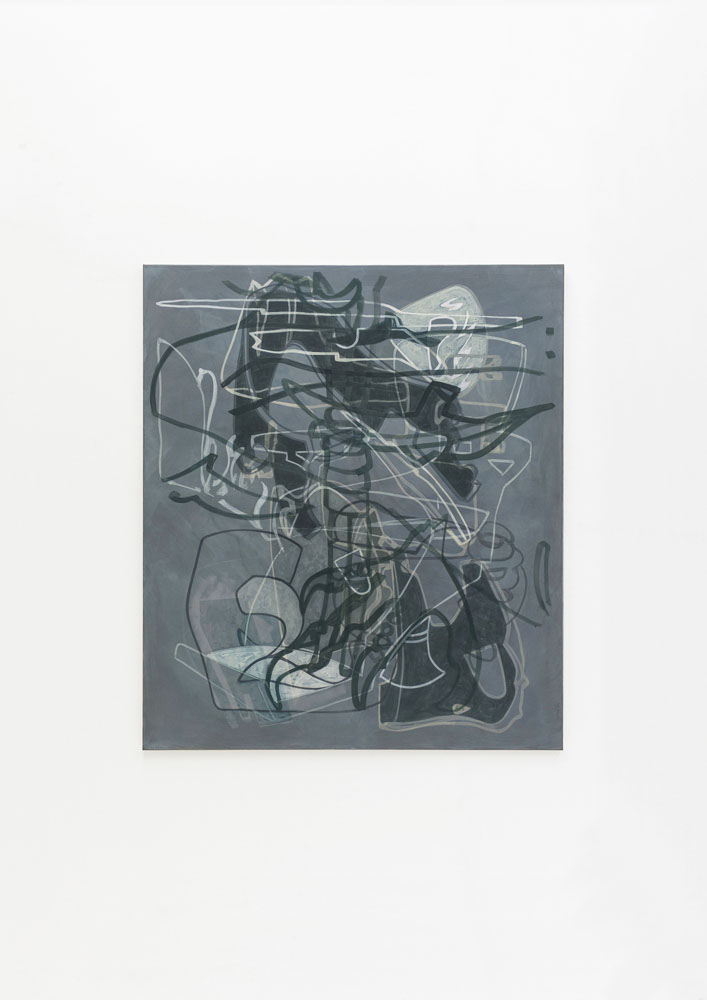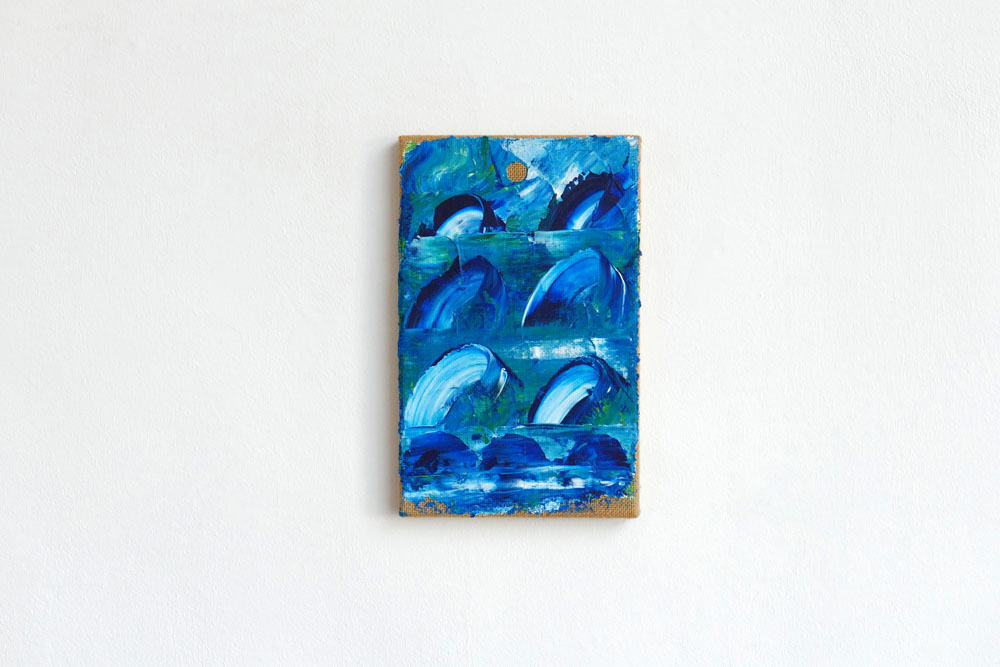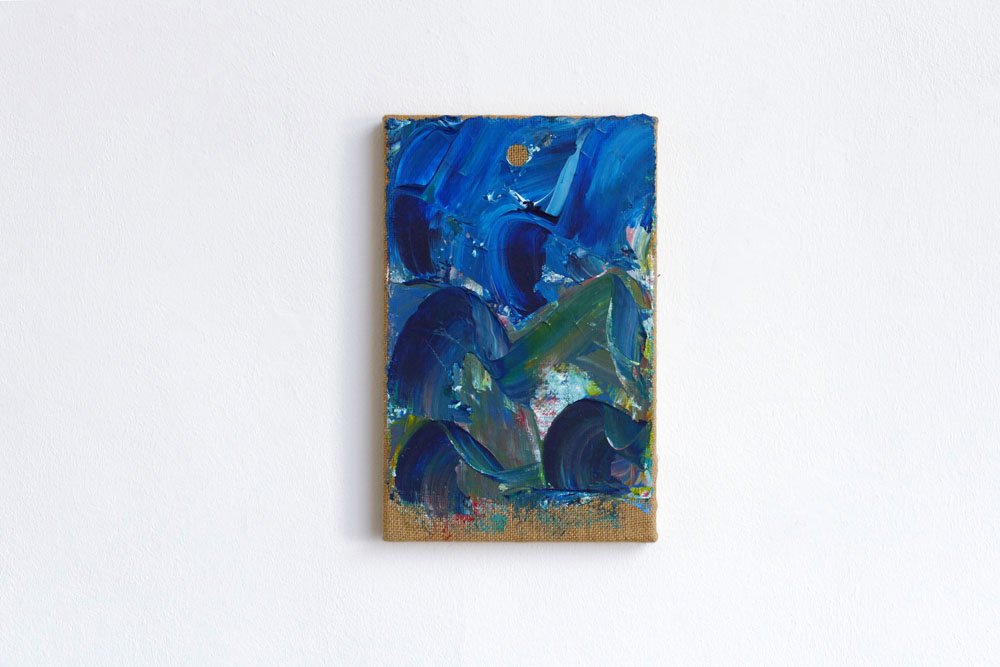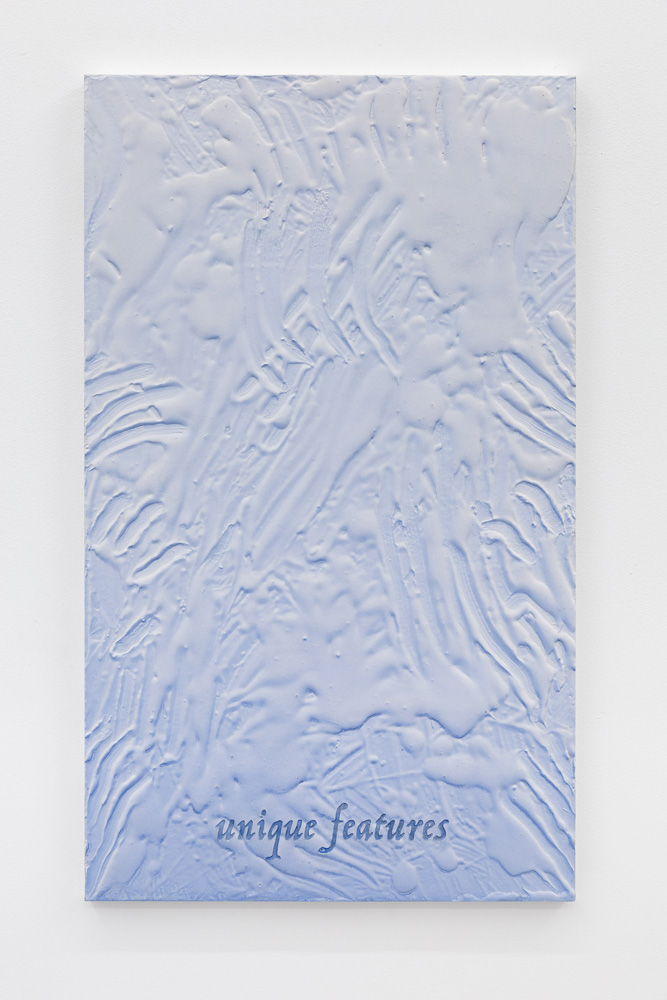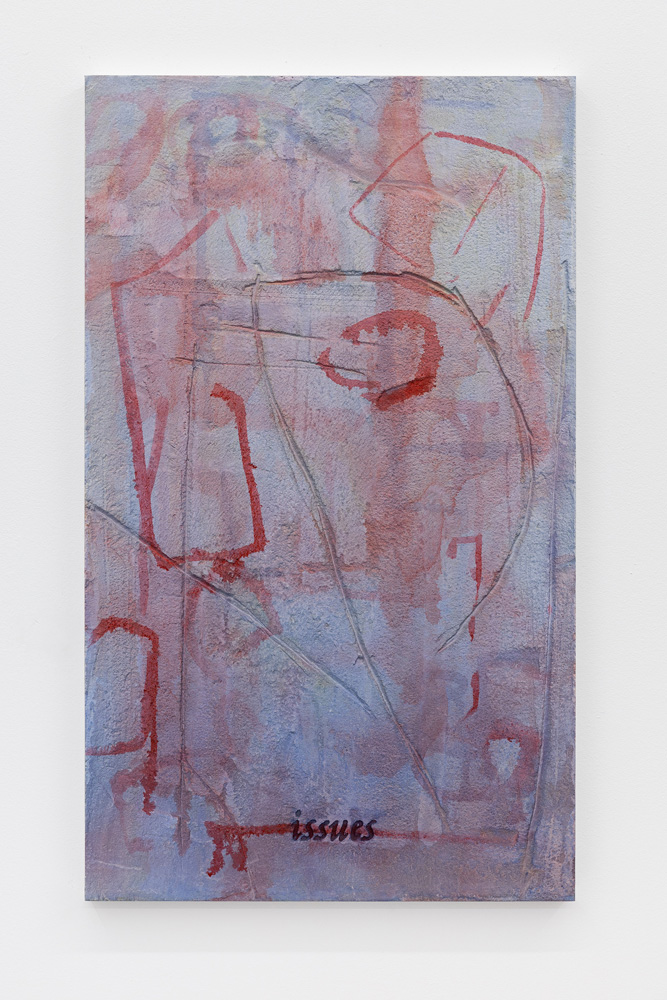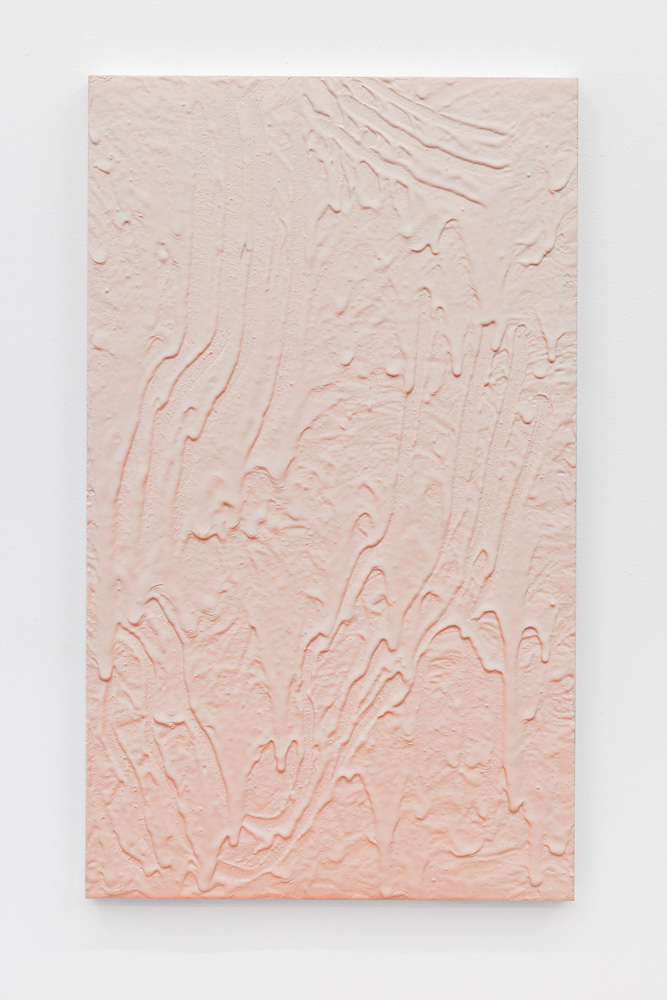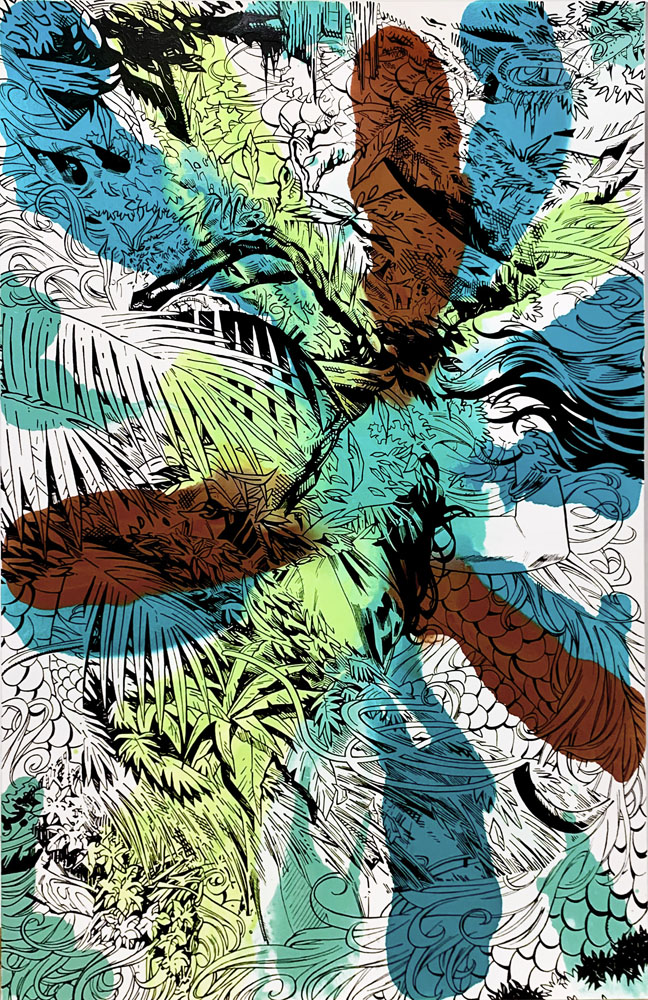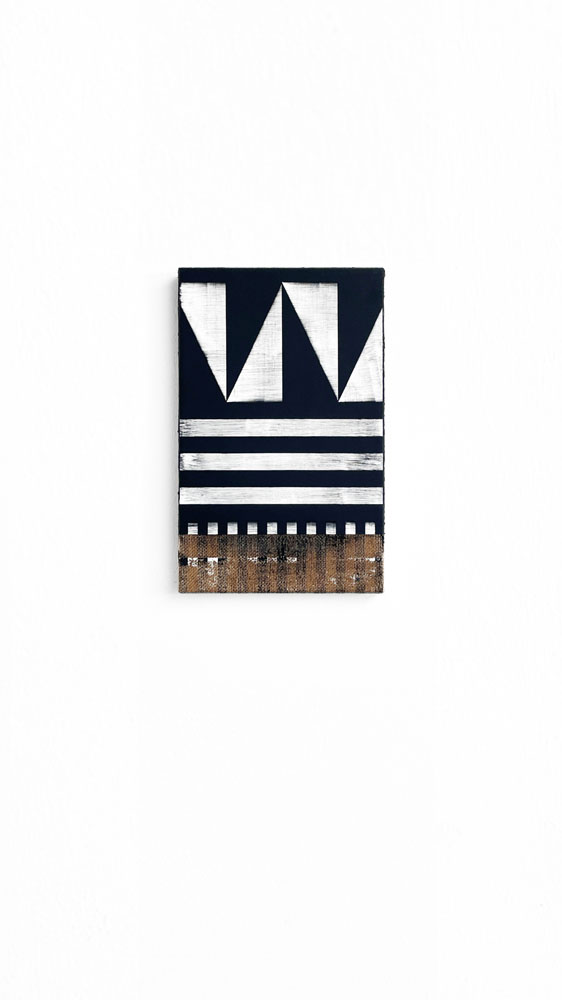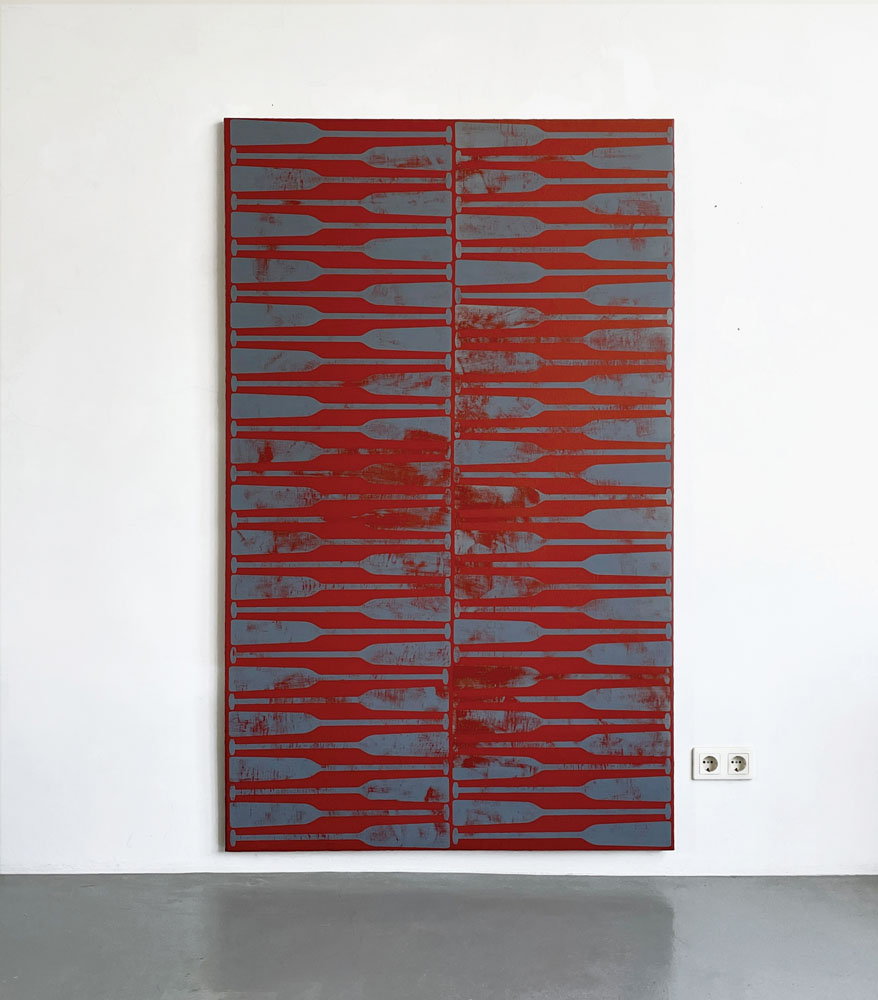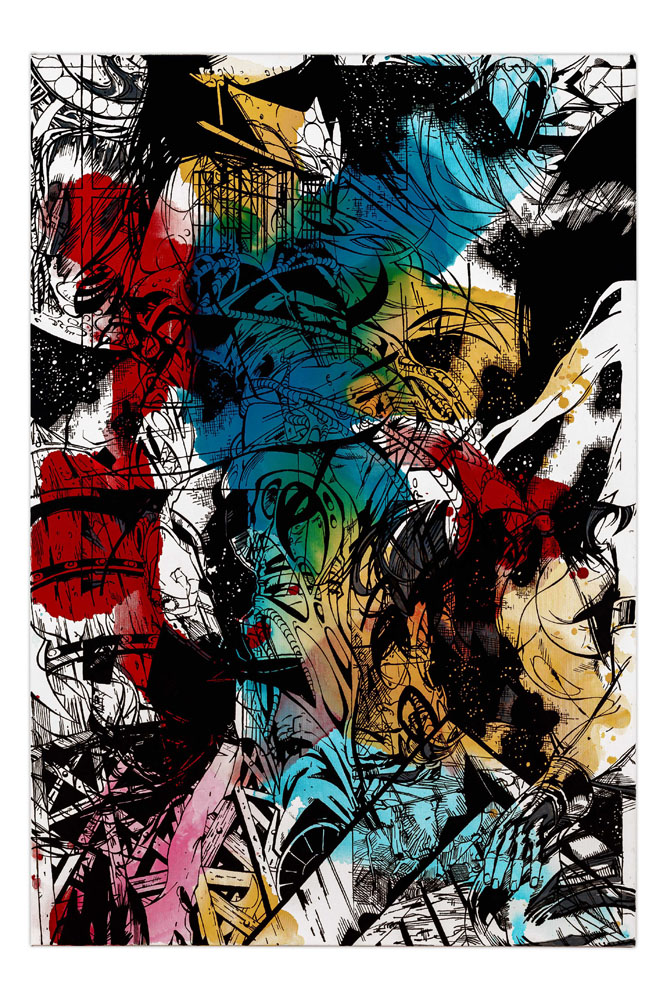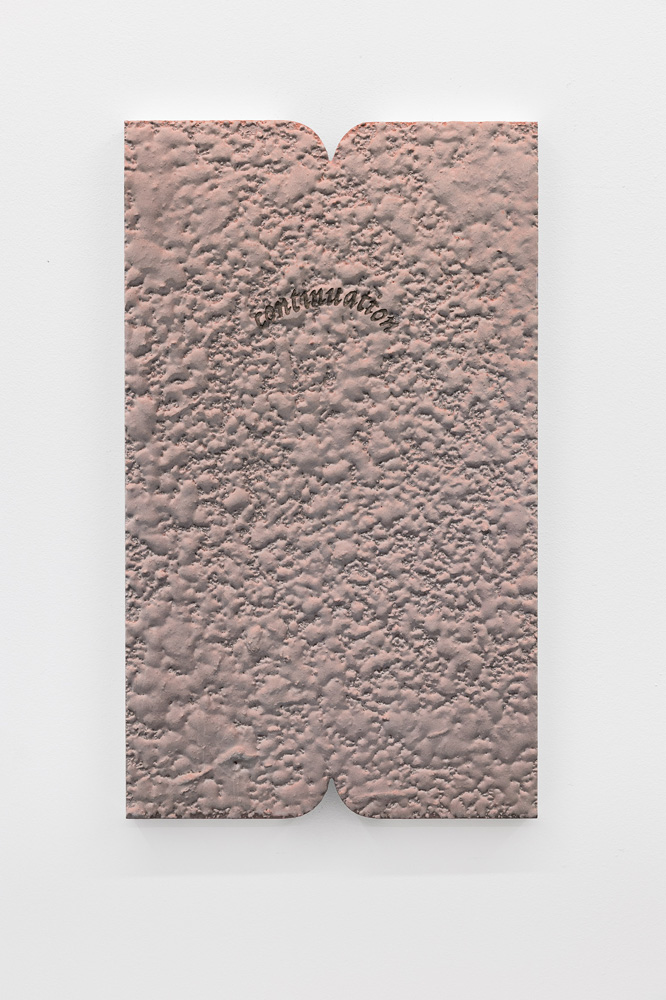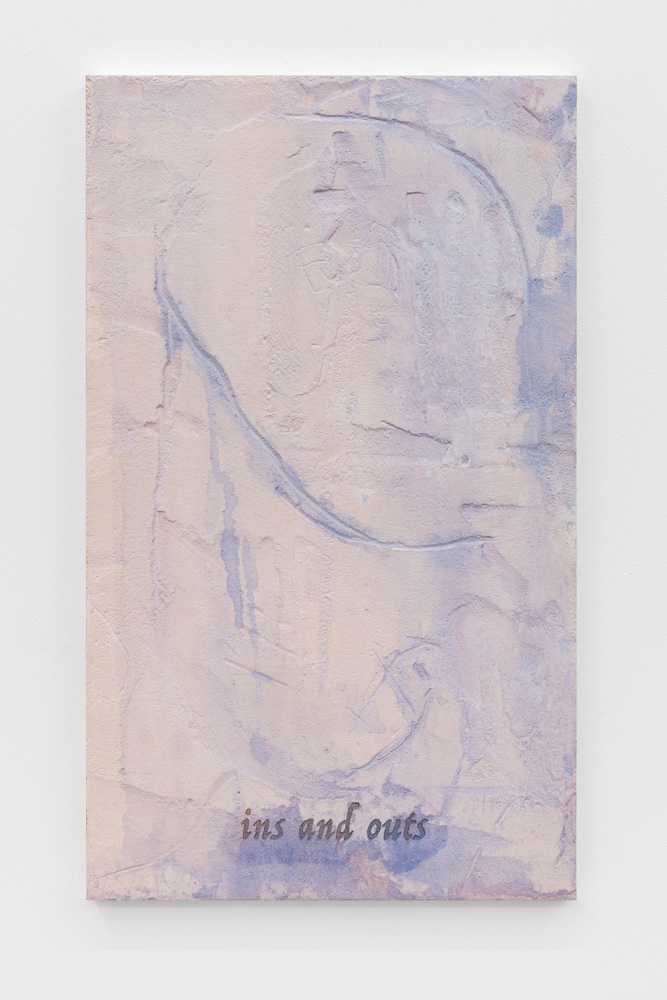Melanie Ebenhoch, Nicolas Jasmin, Herwig Kempinger, Maria Lassnig , Ute Müller, Titania Seidl, Lukas Thaler, Heimo Zobernig Krixxi Kraxxi
23.6.2023 - 16.9.2023
Exhibited Works
Informations
Melanie Ebenhoch, Nicolas Jasmin, Herwig Kempinger, Maria Lassnig, Ute Müller, Titania Seidl, Lukas Thaler, Heimo Zobernig
An aqueduct from Viennese abstraction, curated by Christoph Meier
Punkti, Punkti, Strichi, Strichi, fertig ist das Mondgesichti. So schnell kann es gehen. Kann man davon leben? Oder: Das kann ja jeder. Aber Kunst kommt ja bekanntlich von Können. Kunst' mir 1000 Schilling borgen? [Dot, dot, dash, dash, finished is the moon face. As simple as that! Can you make a living from that? Or: Anyone can do that! But presumably art comes from ability. Art thou willing to lend me 1,000 shillings?’], even my grandfather used to joke. Back then, every decent pub in Vienna still served ham roll or Russian egg – the latter undoubtedly the culinary equivalent of painting, scribbly scrawly on a plate. Back in the days when the avant-garde indulged in alcohol abuse in Vienna’s joints and tried to fill the gap between that which can be seen and that which can be said.
The exhibition with the onomatopoeic title Krixxi Kraxxi (Scribbly Scrawly) unfolds precisely in that space. Inside the gap between what can be seen and what can be said in Vienna. From outside social scepticism is approaching, as described above. It promotes strategies of refusal; what can be seen distances itself from what can be said. And the gap widens conspicuously when the former dedicates itself to abstraction. In Viennese painting, as is well known, there is always a hint of irony. Viennese abstraction, in particular, constantly oscillates between the no-man’s land of “anything goes” and its cliché-ridden condemnation. The exhibition Krixxi Kraxxi stakes its territorial claims within this double jeopardy.
The Austrian capital sits in a similarly picturesque strategic position: on the edge of the Alps, on the blue Danube, on the shores of the primeval Paratethys ocean, whose mineral flavour now suffuses the wines of the Vienna Basin. Its clay soils provided enough material for the construction of an imperial cityscape. But Vienna’s still ruling social democracy is also rooted in its clay pits. Yet the brittle bricks fired there, with their fine lime inclusions, had to be protected from the atmosphere and thus stimulated façade design. This is why a lot of scribbly scrawly adorns the Gründerzeit buildings lining the city’s streets. Still, even the most unadorned of façades, Adolf Loos’s ‘House without Eyebrows’, prompted scathing criticism from the city dwellers of the time.
But let’s be honest: the quality of life in Vienna is too good to complain. The cultural offering is abundant, the social system still functional and the tap water crystal clear. This water also provides the material framework of this exhibition. For all the scribbly scrawly you see here was applied to canvas with water from Vienna’s Hochquellwasserleitungen [mountain spring pipelines]. In 36 hours, without the help of pumps, through tunnels and via aqueducts, it flowed from the Alps to the capital, where it diluted these contributions to Viennese abstraction.
But on to the artists in the exhibition: Melanie Ebenhoch likes to draw cinematic images or make a scene for us. To do so, she uses film clichés or the optical functionalities of the camera. In her work, she likes to poke fun at herself, drowning her actual concerns in soft-focus blur and casually transcending the framework of painting by placing her – equally filmic – subjects in space. Nicolas Jasmin, on the other hand, operates within the boundaries of painting. He works in different places, where he applies different working processes and develops variations within these routines. Step by step, he piles gestures onto the canvas, then removes them again layer by layer to create gaps. He samples sequences and movements, acting musically, as it were, within the medium of painting. Headbanging with a brush. While also conveying an acoustic impression, the work of Herwig Kempinger sounds more like film music. No repetition, but dynamic, orchestral arrangements. Dramaturgy properly speaking, and statement at the same time. The interplay of graphic and painterly elements unfolds both in the details and on the scale of the lively, dense and glowing metropolis. Rush hour, prime time and superheroes as far as the eye can see. Maria Lassnig spent many years in New York – ‘the city of strong women’, as she wrote in her diary – where she durably changed the perspective on painting in her European homeland. Loosening the bond between brush and image, she decided to follow her body. To this day, she remains one of the most seminal developers of abstraction, which she has pursued blindly at times, yet always with utmost clarity. This exhibition also means to pay a large compliment to her. In the work of Ute Müller too, every painterly action stands for an attitude and physical movement. Together they form the notation of a choreography that time and again speaks of the filling of the canvas. Looking for an image, one sees the portrayal of her working process, a long-time exposure shot of the artist’s actions in front of the canvas. And it is precisely this work on an image of one’s own actions, or the inherent awareness of it, that testifies to a conscious decision to engage as a painter. Similarly, the work in front of the canvas does not take a backseat in the work of Titania Seidl, even if it is embedded in a surreal field of fog. Seidl seems to procedurally string subjects together and to literally domesticate kitsch in the process. She leads the eye astray, layer by layer, by repeatedly shifting the gaze on the gaze, pushing and shoving things into focus. The hole, the window, the clearing – openings that connect two ends but, in doing so, also lay bare their relationship. Her colleague Lukas Thaler uses deception à la trompe-l’œil as a recurring method, whether in the form of reliefs that promise more three-dimensionality than they can deliver, or as speech bubbles of potential protagonists or textual director’s notes acting like fillers between scenes. In Thaler’s work, the protagonists’ role is always sketchy, as the central figure is the painting itself. Text and texture combine to form characters and take the audience out of context. A spatial and sculptural practice can also be observed in the work of Heimo Zobernig, and it is equally infused with humour. It needed its own colour theory and uncompromising parameters to reclaim freedom. Heimo – as everyone in Vienna calls him – remains thrifty, doing no more than required to let us sense this freedom. You can literally watch him do so. He was the first artist on this list, but as always, the last one in the alphabet. No wonder he would have preferred to call this show Krizzi Krazzi.
Christoph Meier
